

Basics of Spaceflight: Glossary
Use your browser's " FIND " capability to locate a word right away on this page. You should also have a good English dictionary at hand. Additional resources are the "SEARCH BSF" function at the bottom of each page, and the Units of Measure section. You might also wish to consult the SEDS Basic Astronomical Terms page, or the NASA Thesaurus . Some additional glossaries that may be useful are linked here .
a, A -- Acceleration. a = Δ velocity / Δ time. Acceleration = Force / Mass
A -- Ampere, the SI base unit of electric current.
Å -- Angstrom (0.0001 micrometer, 0.1 nm).
A Ring -- The outermost of the three rings of Saturn that are easily seen in a small telescope.
AAAS -- American Association for the Advancement of Science.
AACS -- Attitude and Articulation Control Subsystem onboard a spacecraft.
AAS -- American Astronomical Society.
AC -- Alternating current.
Acceleration -- Change in velocity . Note that since velocity comprises both direction and magnitude (speed), a change in either direction or speed constitutes acceleration.
ALT -- Altitude.
ALT -- Altimetry data.
AM -- Ante meridiem (Latin: before midday), morning.
am -- Attometer (10 -18 m).
AMMOS -- Advanced Multimission Operations System.
Amor -- A class of Earth-crossing asteroid .
AO -- Announcement of Opportunity.
AOS -- Acquisition Of Signal, used in DSN operations.
Aphelion -- Apoapsis in solar orbit.
Apoapsis -- The farthest point in an orbit from the body being orbited.
Apogee -- Apoapsis in Earth orbit.
Apochron -- Apoapsis in Saturn orbit.
Apojove -- Apoapsis in Jupiter orbit.
Apollo -- A class of Earth-crossing asteroid .
Apolune -- Apoapsis in lunar orbit.
Apselene -- Apoapsis in lunar orbit.
Argument -- Angular distance.
Argument of periapsis -- The argument (angular distance) of periapsis from the ascending node.
Ascending node -- The point at which an orbit crosses a reference plane (such as a planet's equatorial plane or the ecliptic plane) going north.
Asteroids -- Small bodies composed of rock and metal in orbit about the Sun.
Aten -- A class of Earth-crossing asteroid .
Attometer -- 10 -18 meter.
Astronomical Twilight -- For technical definition, please follow this link to the U.S. Naval Observatory Astronomical Applications website.
au -- Astronomical Unit, based on the mean Earth-to-Sun distance, 149,597,870 km. Refer to "Units of Measure" section for complete information.
AZ -- Azimuth.
B -- Bel, a unit of ratio equal to ten decibels . Named in honor of telecommunications pioneer Alexander Graham Bell.
B Ring -- The middle of the three rings of Saturn that are easily seen in a small telescope.
Barycenter -- The common center of mass about which two or more bodies revolve.
Beacon -- Downlink from a spacecraft that immediately indicates the state of the spacecraft as being one of several possible states by virtue of the presence and/or frequency of the subcarrier. See Chapter 10.
Bel -- Unit of ratio equal to ten decibels. Named in honor of telecommunications pioneer Alexander Graham Bell.
Billion -- In the U.S., 10 9 . In other countries using SI, 10 12 .
Bi-phase -- A modulation scheme in which data symbols are represented by a shift from one phase to another. See Chapter 10.
BOT -- Beginning Of Track, used in DSN operations.
BPS -- Bits Per Second, same as Baud rate.
BSF -- Basics of Space Flight (this document).
BVR -- DSN Block Five (V) Receiver.
BWG -- Beam waveguide 34-m DSS, the DSN's newest DSS design.
c -- The speed of light, 299,792 km per second.
C-band -- A range of microwave radio frequencies in the neighborhood of 4 to 8 GHz.
C Ring -- The innermost of the three rings of Saturn that are easily seen in a small telescope.
Caltech -- The California Institute of Technology.
Carrier -- The main frequency of a radio signal generated by a transmitter prior to application of any modulation.
Cassegrain -- Reflecting scheme in antennas and telescopes having a primary and a secondary reflecting surface to "fold" the EMF back to a focus near the primary reflector.
CCD -- Charge Coupled Device, a solid-state imaging detector.
C&DH -- Command and Data Handling subsystem on board a spacecraft, similar to CDS.
CCS -- Computer Command subsystem on board a spacecraft, similar to CDS.
CCSDS -- Consultative Committee for Space Data Systems, developer of standards for spacecraft uplink and downlink, including packets.
CDR -- GCF central data recorder.
CDS -- Command and Data Subsystem onboard a spacecraft.
CDSCC -- DSN's Canberra Deep Space Communications Complex in Australia.
CDU -- Command Detector Unit onboard a spacecraft.
Centrifugal force -- The outward-tending apparent force of a body revolving around another body.
Centimeter -- 10 -2 meter.
Centripetal acceleration -- The inward acceleration of a body revolving around another body.
CGPM -- General Conference of Weights and Measures, Sevres France. The abbreviation is from the French. CGPM is the source for the multiplier names (kilo, mega, giga, etc.) listed in this document.
Chandler wobble -- A small motion in the Earth's rotation axis relative to the surface, discovered by American astronomer Seth Carlo Chandler in 1891. Its amplitude is about 0.7 arcseconds (about 15 meters on the surface) with a period of 433 days. It combines with another wobble with a period of one year, so the total polar motion varies with a period of about 7 years. The Chandler wobble is an example of free nutation for a spinning non-spherical object.
Channel -- In telemetry, one particular measurement to which changing values may be assigned. See Chapter 10.
CIT -- California Institute of Technology, Caltech.
Civil Twilight -- For technical definition, please follow this link to the U.S. Naval Observatory Astronomical Applications website.
Clarke orbit -- Geostationary orbit.
CMC -- Complex Monitor and Control, a subsystem at DSCCs.
CMD -- DSN Command System. Also, Command data.
CNES -- Centre National d'Études Spatiales, France.
Conjunction -- A configuration in which two celestial bodies have their least apparent separation.
Coherent -- Two-way communications mode wherein the spacecraft generates its downlink frequency based upon the frequency of the uplink it receives.
Coma -- The cloud of diffuse material surrounding the nucleus of a comet.
Comets -- Small bodies composed of ice and rock in various orbits about the Sun.
CRAF -- Comet Rendezvous / Asteroid Flyby mission, cancelled.
CRS -- Cosmic Ray Subsystem, high-energy particle instrument on Voyager.
CRT -- Cathode ray tube video display device.
DC -- Direct current.
DC -- The DSN Downlink Channel, several of which are in each DSN Downlink Tracking & Telemetry subsystem, DTT.
DCC -- The DSN Downlink Channel Controller, one of which is in each DSN Downlink Channel, DC.
DCPC -- The DSN Downlink Channel Processor Cabinet, one of which contains a DSN Downlink Channel, DC.
DEC -- Declination.
Decibel -- dB , an expression of ratio (see dB, above). One tenth of a Bel. See NIST website for further definition.
Declination -- The measure of a celestial body's apparent height above or below the celestial equator.
Density -- Mass per unit volume. For example , the density of water can be stated as 1 gram/cm 3 .
Descending node -- The point at which an orbit crosses a reference plane (such as a planet's equatorial plane or the ecliptic plane) going south.
DKF -- DSN keyword file, also known as KWF.
Doppler effect -- The effect on frequency imposed by relative motion between transmitter and receiver. See Chapter 6 .
Downlink -- Signal received from a spacecraft.
DSOT -- Data System Operations Team, part of the DSMS staff.
DSCC -- Deep Space Communications Complex, one of three DSN tracking sites at Goldstone, California; Madrid, Spain; and Canberra, Australia; spaced about equally around the Earth for continuous tracking of deep-space vehicles.
DSMS -- Deep Space Mission System, the system of computers, software, networks, and procedures that processes data from the DSN at JPL.
DSN -- Deep Space Network, NASA's worldwide spacecraft tracking facility managed and operated by JPL.
DSS -- Deep Space Station, the antenna and front-end equipment at DSCCs.
DT -- Dynamical Time. Replaces Ephemeris Time, ET, as the independent argument in dynamical theories and ephemerides. Its unit of duration is based on the orbital motions of the Earth, Moon, and planets. DT has two expressions, Terrestrial Time, TT, (or Terrestrial Dynamical Time, TDT), and Barycentric Dynamical Time, TDB. More information on these, and still more timekeeping expressions, may be found at the U.S. Naval Observatory website .
DTT -- The DSN Downlink Tracking & Telemetry subsystem.
Dyne -- A unit of force equal to the force required to accelerate a 1-g mass 1 cm per second per second. Compare with Newton.
E -- Exa, a multiplier, x10 18 from the Greek "hex" (six, the "h" is dropped). The reference to six is because this is the sixth multiplier in the series k, M, G, T, P, E. See the entry for CGPM.
Earth -- Third planet from the Sun, a terrestrial planet.
Eccentricity -- The distance between the foci of an ellipse divided by the major axis.
Ecliptic -- The plane in which Earth orbits the Sun and in which solar and lunar eclipses occur.
EDL -- (Atmospheric) Entry, Descent, and Landing.
EDR -- Experiment Data Record.
EHz -- ExaHertz (10 18 Hz)
EL -- Elevation.
Ellipse -- A closed plane curve generated in such a way that the sums of its distances from the two fixed points (the foci) is constant.
ELV -- Expendable launch vehicle.
EM -- Electromagnetic.
EMF -- Electromagnetic force (radiation).
EMR -- Electromagnetic radiation.
EOT -- End Of Track, used in DSN operations.
Equator -- An imaginary circle around a body which is everywhere equidistant from the poles, defining the boundary between the northern and southern hemispheres.
Equinox -- The equinoxes are times at which the center of the Sun is directly above the Earth's equator. The day and night would be of equal length at that time, if the Sun were a point and not a disc, and if there were no atmospheric refraction. Given the apparent disc of the Sun, and the Earth's atmospheric refraction, day and night actually become equal at a point within a few days of each equinox. The vernal equinox marks the beginning of spring in the northern hemisphere, and the autumnal equinox marks the beginning of autumn in the northern hemisphere.
ERC -- NASA's Educator Resource Centers.
ERT -- Earth-received time, UTC of an event at DSN receive-time, equal to SCET plus OWLT.
ESA -- European Space Agency.
ESP -- Extra-Solar Planet, a planet orbiting a star other than the Sun. See also Exoplanet.
ET -- Ephemeris time, a measurement of time defined by orbital motions. Equates to Mean Solar Time corrected for irregularities in Earth's motions. Obsolete, replaced by TT, Terrestrial Time.
eV -- Electron volt, a measure of the energy of subatomic particles.
Exoplanet -- Extrasolar planet. A planet orbiting a star other than the Sun.
Extrasolar planet -- A planet orbiting a star other than our Sun. Exoplanet.
FDS -- Flight Data Subsystem.
FE -- Far Encounter phase of mission operations.
Femtometer -- 10 -15 meter.
Fluorescence -- The phenomenon of emitting light upon absorbing radiation of an invisible wavelength.
fm -- Femtometer (10 -15 m)
FM -- Frequency modulation.
FTS -- DSN Frequency and Timing System. Also, frequency and timing data.
FY -- Fiscal year.
G -- Universal Constant of Gravitation . Its tiny value (G = 6.6726 x 10 -11 Nm 2 /kg 2 ) is unchanging throughout the universe.
G -- Giga, a multiplier, x10 9 , from the Latin "gigas" (giant). See the entry for CGPM.
g -- Acceleration due to a body's gravity. Constant at any given place, the value of g varies from object to object (e.g. planets), and also with the distance from the center of the object. The relationship between the two constants is: g = GM/r 2 where r is the radius of separation between the masses' centers, and M is the mass of the primary body (e.g. a planet). At Earth's surface, the value of g = 9.8 meters per second per second (9.8m/s 2 ). See also weight .
g -- Gram, a thousandth of the metric standard unit of mass (see kg ). The gram was originally based upon the weight of a cubic centimeter of water, which still approximates the current value.
Gal -- Unit of gravity field measurement corresponding to a gravitational acceleration of 1 cm/sec 2 .
Galaxy -- One of billions of systems, each composed of numerous stars, nebulae, and dust.
Galilean satellites -- The four large satellites of Jupiter so named because Galileo discovered them when he turned his telescope toward Jupiter: Io, Europa, Ganymede, and Callisto.
Gamma rays -- Electromagnetic radiation in the neighborhood of 100 femtometers wavelength.
GCF -- Ground Communications Facilities, provides data and voice communications between JPL and the three DSCCs.
GDS -- Ground Data System, encompasses DSN, GCF, DSMS, and project data processing systems.
GDSCC -- DSN's Goldstone Deep Space Communications Complex in California.
GEO -- Geosynchronous Earth Orbit.
Geostationary -- A geosynchronous equatorial circular orbit. Also called Clarke orbit.
Geosynchronous -- A direct, circular, low inclination orbit about the Earth having a period of 23 hours 56 minutes 4 seconds.
GHz -- Gigahertz (10 9 Hz).
GLL -- The Galileo spacecraft.
GMT -- Greenwich Mean Time. Obsolete. UT, Universal Time is preferred.
Gravitational waves -- Einsteinian distortions of the space-time medium predicted by general relativity theory (not yet directly detected as of March 2010). (Not to be confused with gravity waves, see below.)
Gravity assist -- Technique whereby a spacecraft takes angular momentum from a planet's solar orbit (or a satellite's orbit) to accelerate the spacecraft, or the reverse. See Chapter 4.
Gravity waves -- Certain dynamical features in a planet's atmosphere (not to be confused with gravitational waves, see above).
Great circle -- An imaginary circle on the surface of a sphere whose center is at the center of the sphere.
GSSR -- Goldstone Solar System Radar, a technique which uses very high-power X and S-band transmitters at DSS 14 to illuminate solar system objects for imaging.
GTL -- Geotail spacecraft.
GTO -- Geostationary (or geosynchronous) Transfer Orbit.
HA -- Hour Angle.
Halo orbit -- A spacecraft's pattern of controlled drift about an unstable Lagrange point (L1 or L2 for example) while in orbit about the primary body (e.g. the Sun).
HEF -- DSN's high-efficiency 34-m DSS, replaces STD DSSs.
Heliocentric -- Sun-centered.
Heliopause -- The boundary theorized to be roughly circular or teardrop-shaped, marking the edge of the Sun's influence, perhaps 100 AU from the Sun.
Heliosphere -- The space within the boundary of the heliopause, containing the Sun and solar system.
HEMT -- High-electron-mobility transistor, a low-noise amplifier used in DSN.
HGA -- High-Gain Antenna onboard a spacecraft.
Hohmann Transfer Orbit -- Interplanetary trajectory using the least amount of propulsive energy. See Chapter 4.
Horizon -- The line marking the apparent junction of Earth and sky. For the technical definition, please follow this link to the U.S. Naval Observatory's Astronomical Applications .
h -- Hour, 60 minutes of time.
Hour Angle -- The angular distance of a celestial object measured westward along the celestial equator from the zenith crossing. In effect, HA represents the RA for a particular location and time of day.
ICRF -- International Celestial Reference Frame. The realization of the ICRS provided by the adopted positions of extragalactic objects. Link .
ICRS -- International Celestial Reference System. Conceptual basis for celestial positions, aligned with respect to extremely distant objects and utilizing the theory of general relativity. Link .
IERS -- International Earth Rotation and Reference Systems Service. Link .
IF -- Intermediate Frequency. In a radio system, a selected processing frequency between RF (Radio Frequency) and the end product (e.g. audio frequency).
Inclination -- The angular distance of the orbital plane from the plane of the planet's equator, stated in degrees.
IND -- JPL's Interplanetary Network Directorate, formerly IPN-ISD.
Inferior planet -- Planet which orbits closer to the Sun than the Earth's orbit.
Inferior conjunction -- Alignment of Earth, Sun, and an inferior planet on the same side of the Sun.
Ion -- A charged particle consisting of an atom stripped of one or more of its electrons.
IPAC -- Infrared Processing and Analysis Center at Caltech campus on Wilson Avenue in Pasadena.
IPC -- Information Processing Center, JPL's computing center on Woodbury Avenue in Pasadena.
IPN-ISD -- (Obsolete. See IND) JPL's Interplanetary Network and Information Systems Directorate, formerly TMOD.
IR -- Infrared, meaning "below red" radiation. Electromagnetic radiation in the neighborhood of 100 micrometers wavelength.
IRAS -- Infrared Astronomical Satellite.
ISM -- Interstellas medium.
ISO -- International Standards Organization.
ISOE -- Integrated Sequence of Events.
Isotropic -- Having uniform properties in all directions.
IUS -- Inertial Upper Stage.
JGR -- Journal Of Geophysical Research.
Jovian -- Jupiter-like planets, the gas giants Jupiter, Saturn, Uranus, and Neptune.
JPL -- Jet Propulsion Laboratory, operating division of the California Institute of Technology.
Jupiter -- Fifth planet from the Sun, a gas giant or Jovian planet.
K -- Kelvin, the SI base unit of thermodynamic temperature.
K-band -- A range of microwave radio frequencies in the neighborhood of 12 to 40 GHz.
kg -- Kilogram. See below.
Keyhole -- An area in the sky where an antenna cannot track a spacecraft because the required angular rates would be too high. Mechanical limitations may also contribute to keyhole size. Discussed in depth under Chapter 2 .
kHz -- kilohertz.
Kilogram (kg) -- the SI base unit of mass, based on the mass of a metal cylinder kept in France. See also g (gram).
Kilometer -- 10 3 meter.
Klystron -- A microwave travelling wave tube power amplifier used in transmitters.
km -- Kilometers.
KSC -- Kennedy Space Center, Cape Canaveral, Florida.
KWF -- Keyword file of events listing DSN station activity. Also known as DKF, DSN keyword file.
Kuiper belt -- A disk-shaped region about 30 to 100 AU from the Sun considered to be the source of the short-period comets.
LAN -- Local area network for inter-computer communications.
Large Magellanic Cloud -- LMC, the larger of two small galaxies orbiting nearby our Milky Way galaxy, which are visible from the southern hemisphere.
Laser -- Light Amplification by Stimulated Emission of Radiation. Compare with Maser.
Latitude -- Circles in parallel planes to that of the equator defining north-south measurements, also called parallels.
L-band -- A range of microwave radio frequencies in the neighborhood of 1 to 2 GHz.
LCP -- Left-hand circular polarization.
Leap Second -- A second which may be added or subtracted to adjust UTC at either, both, or neither, of two specific opportunities each year.
Leap Year -- Every fourth year, in which a 366th day is added since the Earth's revolution takes 365 days 5 hr 49 min.
LECP -- Low-Energy Charged-Particular Detector onboard a spacecraft.
LEO -- Low Equatorial Orbit.
LGA -- Low-Gain Antenna onboard a spacecraft.
Light -- Electromagnetic radiation in the neighborhood of 1 nanometer wavelength.
Light speed -- 299,792 km per second, the constant c.
Light time -- The amount of time it takes light or radio signals to travel a certain distance at light speed.
Light year -- A measure of distance, the distance light travels in one year, about 63,197 au.
LMC -- Large Magellanic Cloud, the larger of two small galaxies orbiting nearby our Milky Way galaxy, which are visible from the southern hemisphere.
LMC -- Link Monitor and Control subsystem at the SPCs within the DSN DSCCs.
LNA -- Low-noise amplifier in DSN, either a maser or a HEMT.
Local time -- Time adjusted for location around the Earth or other planets in time zones.
Longitude -- Great circles that pass through both the north and south poles, also called meridians.
LOS -- Loss Of Signal, used in DSN operations.
LOX -- Liquid oxygen.
m -- Meter (U.S. spelling; elsewhere metre), the international standard of linear measurement.
m -- milli- multiplier of one one-thousandth, e.g. 1 mW = 1/1000 of a Watt, mm = 1/1000 meter.
m, M -- Mass. The kilogram is the standard unit of mass. Mass = Acceleration / Force .
M -- Mega, a multiplier, x10 6 (million) from the Greek "megas" (great). See the entry for CGPM.
M100 -- Messier Catalog entry number 100 is a spiral galaxy in the Virgo cluster seen face-on from our solar system.
Major axis -- The maximum diameter of an ellipse.
Mars -- Fourth planet from the Sun, a terrestrial planet.
Maser -- A microwave travelling wave tube amplifier named for its process of Microwave Amplification by Stimulated Emission of Radiation. Compare with Laser. In the Deep Space Network, masers are used as low-noise amplifiers of downlink signals, and also as frequency standards.
Mass -- A fundamental property of an object comprising a numerical measure of its inertia; the amount of matter in the object. While an object's mass is constant (ignoring Relativity for this purpose), its weight will vary depending on its location. Mass can only be measured in conjunction with force and acceleration .
MC-cubed -- Mission Control and Computing Center at JPL (outdated).
MCCC -- Mission Control and Computing Center at JPL (outdated).
MCD -- DSN's maximum-likelihood convolutional decoder, the Viterbi decoder.
MCT -- Mission Control Team, JPL Section 368 mission execution real-time operations.
MDSCC -- DSN's Madrid Deep Space Communications Complex in Spain.
Mean solar time -- Time based on an average of the variations caused by Earth's non-circular orbit. The 24-hour day is based on mean solar time.
Mercury -- First planet from the Sun, a terrestrial planet.
Meridians -- Great circles that pass through both the north and south poles, also called lines of longitude.
MESUR -- The Mars Environmental Survey project at JPL, the engineering prototype of which was originally called MESUR Pathfinder, later Mars Pathfinder.
Meteor -- A meteoroid which is in the process of entering Earth's atmosphere. It is called a meteorite after landing.
Meteorite -- Rocky or metallic material which has fallen to Earth or to another planet.
Meteoroid -- Small bodies in orbit about the Sun which are candidates for falling to Earth or to another planet.
MGA -- Medium-Gain Antenna onboard a spacecraft.
MGN -- The Magellan spacecraft.
MGSO -- (Obsolete. See TMOD) JPL's Multi-mission Ground Systems Office.
MHz -- Megahertz (10 6 Hz).
Micrometer -- µm, 10 -6 meter.
Micron -- Obsolete terms for micrometer, µm (10 -6 m).
Milky Way -- The galaxy which includes the Sun and Earth.
Millimeter -- 10 -3 meter.
MIT -- Massachusetts Institute of Technology.
MLI -- Multi-layer insulation (spacecraft blanketing). See Chapter 11 .
mm -- millimeter (10 -3 m).
MO -- The Mars Observer spacecraft.
Modulation -- The process of modifying a radio frequency by shifting its phase, frequency, or amplitude to carry information.
MON -- DSN Monitor System. Also, monitor data.
Moon -- A small natural body which orbits a larger one. A natural satellite. Capitalized, the Earth's natural satellite.
Moonrise -- For technical definition, please follow this link to the U.S. Naval Observatory Astronomical Applications website.
Moonset -- For technical definition, please follow this link to the U.S. Naval Observatory Astronomical Applications website.
MOSO -- Multimission Operations Systems Office at JPL.
MR -- Mars relay.
µm -- Micrometer (10 -6 m).
Multiplexing -- A scheme for delivering many different measurements in one data stream. See Chapter 10.
N -- Newton, the SI unit of force equal to that required to accelerate a 1-kg mass 1 m per second per second (1m/sec 2 ). Compare with dyne.
N -- North.
Nadir -- The direction from a spacecraft directly down toward the center of a planet. Opposite the zenith.
NASA -- National Aeronautics and Space Administration.
Nautical Twilight -- For technical definition, please follow this link to the U.S. Naval Observatory Astronomical Applications website.
NE -- Near Encounter phase in flyby mission operations.
Neptune -- Eighth planet from the Sun, a gas giant or Jovian planet.
NiCad -- Nickel-cadmium rechargable battery.
NIMS -- Near-Infrared Mapping Spectrometer onboard the Galileo spacecraft.
NIST -- National Institute of Standards .
nm -- Nanometer (10 -9 m).
nm -- Nautical Mile, equal to the distance spanned by one minute of arc in latitude, 1.852 km.
NMC -- Network Monitor and Control subsystem in DSN.
NOCC -- DSN Network Operations Control Center at JPL.
Nodes -- Points where an orbit crosses a reference plane.
Non-coherent -- Communications mode wherein a spacecraft generates its downlink frequency independent of any uplink frequency.
Nucleus -- The central body of a comet.
Nutation -- A small nodding motion in a rotating body. Earth's nutation has a period of 18.6 years and an amplitude of 9.2 arc seconds.
NRZ -- Non-return to zero. Modulation scheme in which a phase deviation is held for a period of time in order to represent a data symbol. See Chapter 10.
NSP -- DSN Network Simplification Project. A project that re-engineered the DSN to consolidate seven data systems into two data systems that handle the same data types.
OB -- Observatory phase in flyby mission operations encounter period.
One-way -- Communications mode consisting only of downlink received from a spacecraft.
Oort cloud -- A large number of comets theorized to orbit the Sun in the neighborhood of 50,000 au.
OPCT -- Operations Planning and Control Team at JPL, "OPSCON." Obsolete, replaced by DSOT, Data Systems Operations Team.
Opposition -- Configuration in which one celestial body is opposite another in the sky. A planet is in opposition when it is 180 degrees away from the Sun as viewed from another planet (such as Earth). For example, Saturn is at opposition when it is directly overhead at midnight on Earth.
OPNAV -- Optical Navigation (images).
OSI -- ISO's Open Systems Interconnection protocol suite.
OSR -- Optical Solar Reflector, thermal control component onboard a spacecraft.
OSS -- Office Of Space Science, NASA. Obsolete, replaced by Science Mission Directorate (SMD).
OSSA -- Office Of Space Science and Applications, NASA (Obsolete, see OSS).
OTM -- Orbit Trim Maneuver, spacecraft propulsive maneuver.
OWLT -- One-Way Light Time, elapsed time between Earth and spacecraft or solar system body.
Packet -- A quantity of data used as the basis for multiplexing, for example in accordance with CCSDS.
PAM -- Payload Assist Module upper stage.
Parallels -- Circles in parallel planes to that of the equator defining north-south measurements, also called lines of latitude.
Pathfinder -- The Mars Environmental Survey (MESUR) engineering prototype later named Mars Pathfinder.
PDS -- Planetary Data System.
PDT -- Pacific Daylight Time.
PE -- Post Encounter phase in flyby mission operations.
Periapsis -- The point in an orbit closest to the body being orbited.
Perigee -- Periapsis in Earth orbit.
Perichron -- Periapsis in Saturn orbit.
Perihelion -- Periapsis in solar orbit.
Perijove -- Periapsis in Jupiter orbit.
Perilune -- Periapsis in lunar orbit.
Periselene -- Periapsis in lunar orbit.
Phase -- The angular distance between peaks or troughs of two waveforms of similar frequency.
Phase -- The particular appearance of a body's state of illumination, such as the full or crescent phases of the Moon.
Phase -- Any one of several predefined periods in a mission or other activity.
Photovoltaic -- Materials that convert light into electric current.
PHz -- Petahertz (10 15 Hz).
PI -- Principal Investigator, scientist in charge of an experiment.
Picometer -- 10 -12 meter.
PIO -- JPL's Public Information Office.
Plasma -- Electrically conductive fourth state of matter (other than solid, liquid, or gas), consisting of ions and electrons.
PLL -- Phase-lock-loop circuitry in telecommunications technology.
Plunge -- In describing the tracking motion of an AZ-EL or ALT-AZ mounted radio telescope, to "plunge" means to exceed 90° in elevation and then to continue tracking as elevation decreases on the other side without swiveling around in azimuth. This is not a capability of DSN antennas.
Pluto -- Ninth planet from the Sun, sometimes classified as a small terrestrial planet.
pm -- Picometer (10 -12 m).
PM -- Post meridiem (Latin: after midday), afternoon.
PN10 -- Pioneer 10 spacecraft.
PN11 -- Pioneer 11 spacecraft.
Prograde -- Orbit in which the spacecraft moves in the same direction as the planet rotates. See retrograde.
PST -- Pacific Standard Time.
PSU -- Pyrotechnic Switching Unit onboard a spacecraft.
Quasar -- Quasi-stellar object observed mainly in radio waves. Quasars are extragalactic objects believed to be the very distant centers of active galaxies.
Radian -- Unit of angular measurement equal to the angle at the center of a circle subtended by an arc equal in length to the radius. Equals about 57.296 degrees.
RAM -- Random Access Memory.
RCP -- Right-hand circular polarization.
Red dwarf -- A small star, on the order of 100 times the mass of Jupiter.
Reflection -- The deflection or bouncing of electromagnetic waves when they encounter a surface.
Refraction -- The deflection or bending of electromagnetic waves when they pass from one kind of transparent medium into another.
REM -- Receiver Equipment Monitor within the Downlink Channel (DC) of the Downlink Tracking & Telemetry subsystem (DTT).
Retrograde -- Orbit in which the spacecraft moves in the opposite direction from the planet's rotation. See prograde.
RF -- Radio Frequency.
RFI -- Radio Frequency Interference.
Right Ascension -- The angular distance of a celestial object measured in hours, minutes, and seconds along the celestial equator eastward from the vernal equinox.
Rise -- As in ascending above the horizon, for the technical definition, please follow this link to the U.S. Naval Observatory's Astronomical Applications .
RNS -- GCF reliable network service.
ROM -- Read Only Memory.
RPIF -- Regional Planetary Imaging Data Facilities.
RRP -- DSN Receiver & Ranging Processor within the Downlink Channel (DC) of the Downlink Tracking & Telemetry subsystem (DTT).
RS -- DSN Radio Science System. Also, radio science data.
RTG -- Radioisotope Thermo-Electric Generator onboard a spacecraft.
RTLT -- Round-Trip Light Time, elapsed time roughly equal to 2 x OWLT.
S -- South.
s -- Second, the SI base unit of time (see this extensive definition).
SA -- Solar Array, photovoltaic panels onboard a spacecraft.
SAF -- Spacecraft Assembly Facility, JPL Building 179.
SAR -- Synthetic Aperture Radar
Satellite -- A small body which orbits a larger one. A natural or an artificial moon. Earth-orbiting spacecraft are called satellites. While deep-space vehicles are technically satellites of the Sun or of another planet, or of the galactic center, they are generally called spacecraft instead of satellites.
Saturn -- Sixth planet from the Sun, a gas giant or Jovian planet.
S-band -- A range of microwave radio frequencies in the neighborhood of 2 to 4 GHz.
SC -- Steering Committee.
SCET -- Spacecraft Event Time, equal to ERT minus OWLT.
SCLK -- Spacecraft Clock Time, a counter onboard a spacecraft.
Sec -- Abbreviation for Second.
Second -- the SI base unit of time. See this extensive definition.
SEDR -- Supplementary Experiment Data Record.
SEF -- Spacecraft event file.
SEGS -- Sequence of Events Generation Subsystem.
Semi-major axis -- Half the distance of an ellipse's maximum diameter, the distance from the center of the ellipse to one end.
Set -- As in going below the horizon, for the technical definition, please follow this link to the U.S. Naval Observatory's Astronomical Applications .
SFOF -- Space Flight Operations Facility, Buildings 230 and 264 at JPL.
SFOS -- Space Flight Operations Schedule, product of SEGS.
Shepherd moons -- Moons which gravitationally confine ring particles.
SI -- The International System of Units (metric system). See also Units of Measure .
SI base unit -- One of seven SI units of measure from which all the other SI units are derived. See SI derived unit. See also Units of Measure .
SI derived unit -- One of many SI units of measure expressed as relationships of the SI base units. For example, the watt, W, is the SI derived unit of power. It is equal to joules per second. W = m 2 ⋅ kg ⋅ s –3 (Note: the joule, J, is the SI derived unit for energy, work, or quantity of heat.) See also Units of Measure .
Sidereal time -- Time relative to the stars other than the Sun.
SIRTF -- Space Infrared Telescope Facility.
SMC -- Small Magellanic Cloud, the smaller of two small galaxies orbiting nearby our Milky Way galaxy, which are visible from the southern hemisphere.
SMD -- Science Mission Directorate, NASA (previously Office Of Space Science, OSS).
SOE -- Sequence of Events.
Solar wind -- Flow of lightweight ions and electrons (which together comprise plasma) thrown from the Sun.
SNR -- Signal-to-Noise Ratio.
SPC -- Signal Processing Center at each DSCC.
Specific Impulse -- A measurement of a rocket's relative performance. Expressed in seconds, the number of which a rocket can produce one pound of thrust from one pound of fuel. The higher the specific impulse, the less fuel required to produce a given amount of thrust.
Spectrum -- A range of frequencies or wavelengths.
SSA -- Solid State Amplifier in a spacecraft telecommunications subsystem, the final stage of amplification for downlink.
SSI -- Solid State Imaging Subsystem, the CCD-based cameras on Galileo.
SSI -- Space Services, Inc., Houston, manufacturers of the Conestoga launch vehicle.
STD -- Standard 34-m DSS, retired from DSN service.
STS -- Space Transportation System (Space Shuttle).
Subcarrier -- Modulation applied to a carrier which is itself modulated with information-carrying variations.
Sunrise -- For technical definition, please follow this link to the U.S. Naval Observatory Astronomical Applications website.
Sunset -- For technical definition, please follow this link to the U.S. Naval Observatory Astronomical Applications website.
Sun synchronous orbit -- A spacecraft orbit that precesses, wherein the location of periapsis changes with respect to the planet's surface so as to keep the periapsis location near the same local time on the planet each orbit. See walking orbit.
Superior planet -- Planet which orbits farther from the Sun than Earth's orbit.
Superior conjunction -- Alignment between Earth and a planet on the far side of the Sun.
SWG -- Science Working Group.
TAU -- Thousand AU Mission.
TCM -- Trajectory Correction Maneuver, spacecraft propulsive maneuver.
TDM -- Time-division multiplexing.
Termination shock -- Shock at which the solar wind is thought to slow to subsonic speed, well inside the heleopause.
T -- Tera, a multiplier x10 12 , from the Greek teras (monster). See the entry for CGPM.
Terrestrial planet -- One of the four inner Earth-like planets.
Three-way -- Coherent communications mode wherein a DSS receives a downlink whose frequency is based upon the frequency of an uplink provided by another DSS.
TMOD -- (Obsolete. See IPN-ISD) JPL's Telecommunications and Mission Operations Directorate. Formerly MGSO.
THz -- Terahertz (10 12 Hz).
TLM -- DSN Telemetry data.
TLP -- DSN Telemetry Processor within the DTT Downlink Channel.
TOS -- Transfer Orbit Stage, upper stage.
Transducer -- Device for changing one kind of energy into another, typically from heat, position, or pressure into a varying electrical voltage or vice-versa, such as a microphone or speaker.
Transit -- For technical definition, please follow this link to the U.S. Naval Observatory Astronomical Applications website.
Transponder -- Electronic device which combines a transmitter and a receiver.
TRC -- NASA's Teacher Resource Centers. Obsolete, now called Educator Resource Centers, ERC.
TRK -- DSN Tracking System. Also, Tracking data.
TRM -- Transmission Time, UTC Earth time of uplink.
True anomaly -- The angular distance of a point in an orbit past the point of periapsis, measured in degrees.
Twilight -- For technical definition, please follow this link to the U.S. Naval Observatory Astronomical Applications website.
TWNC -- Two-Way Non-Coherent mode, in which a spacecraft's downlink is not based upon a received uplink from DSN.
Two-way -- Communications mode consisting of downlink received from a spacecraft while uplink is being received at the spacecraft. See also coherent .
TWT -- Traveling Wave Tube, downlink power amplifier in a spacecraft telecommunications subsystem, the final stage of amplification for downlink (same unit as TWTA).
TWTA -- Traveling Wave Tube Amplifier, downlink power amplifier in a spacecraft telecommunications subsystem, the final stage of amplification for downlink (same unit as TWT).
TXR -- DSN's DSCC Transmitter assembly.
ULS -- Ulysses spacecraft.
Uplink -- Signal sent to a spacecraft.
UPL -- The DSN Uplink Tracking & Command subsystem.
Uranus -- Seventh planet from the Sun, a gas giant or Jovian planet.
USO -- Ultra Stable Oscillator, in a spacecraft telecommunications subsystem.
UT -- Universal Time, also called Zulu (Z) time, previously Greenwich Mean Time. UT is based on the imaginary "mean Sun," which averages out the effects on the length of the solar day caused by Earth's slightly non-circular orbit about the Sun. UT is not updated with leap seconds as is UTC.
UTC -- Coordinated Universal Time , the world-wide scientific standard of timekeeping. It is based upon carefully maintained atomic clocks and is highly stable. Its rate does not change by more than about 100 picoseconds per day. The addition or subtraction of leap seconds, as necessary, at two opportunities every year adjusts UTC for irregularities in Earth's rotation. The U.S. Naval Observatory website provides information in depth on the derivation of UTC.
UV -- Ultraviolet (meaning "above violet") radiation. Electromagnetic radiation in the neighborhood of 100 nanometers wavelength.
UWV -- DSN Microwave subsystem in DSSs which includes waveguides, waveguide switches, LNAs, polarization filters, etc.
Velocity -- A vector quantity whose magnitude is a body's speed and whose direction is the body's direction of motion.
Venus -- Second planet from the Sun, a terrestrial planet.
VGR1 -- Voyager 1 spacecraft.
VGR2 -- Voyager 2 spacecraft.
VLBI -- DSN Very Long Baseline Interferometry System. Also, VLBI data. Link .
W -- Watt, a measure of electrical power equal to potential in volts times current in amps.
Walking orbit -- A spacecraft orbit that precesses, wherein the location of periapsis changes with respect to the planet's surface in a useful way. See Sun-synchronous.
Wavelength -- The distance that a wave from a single oscillation of electromagnetic radiation will propagate during the time required for one oscillation.
Weight -- The gravitational force exerted on an object of a certain mass. The weight of mass m is mg Newtons, where g is the local acceleration due to a body's gravity.
WWW -- World-Wide Web.
X-band -- A range of microwave radio frequencies in the neighborhood of 8 to 12 GHz.
X-ray -- Electromagnetic radiation in the neighborhood of 100 picometer wavelength.
Z -- Zulu in phonetic alphabet, stands for UT, Universal Time.
Zenith -- The point on the celestial sphere directly above the observer. Opposite the nadir.
Discover More Topics From NASA

Asteroids, Comets & Meteors

Kuiper Belt

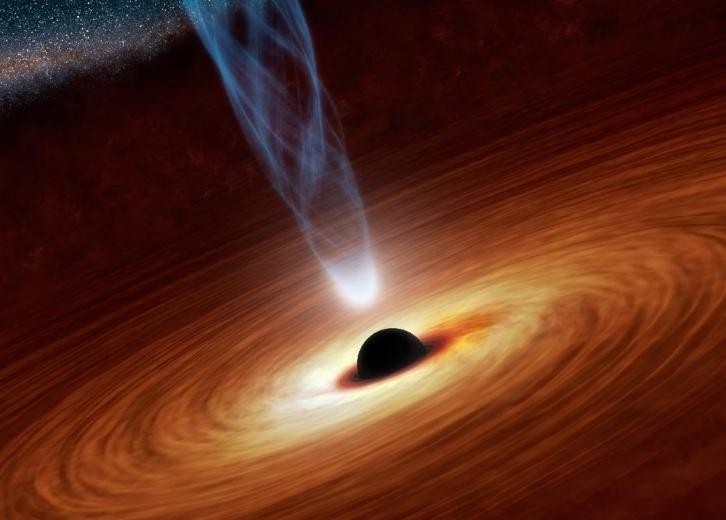
50 space terms for understanding the universe
The National Aeronautics and Space Agency, or NASA, was founded on July 29, 1958, when President Dwight D. Eisenhower signed the National Aeronautics and Space Act, one year after the Soviets launched Sputnik 1, the world's first artificial satellite. NASA was designed from the start to push the bounds of space exploration with research into aerospace and aeronautics as well as with a civilian space program.
In honor of World Space Week , which takes place Oct. 4-10, Stacker compiled a list of key astronomy and astrophysics terms from a variety of authoritative science communication sources, including Crash Course: Astronomy , How Stuff Works , and International Comet Quarterly.
As the agency unrelentingly forged a path toward astronomical discovery, NASA also invented a number of technologies that we use in our everyday lives. These include artificial limbs, LASIK surgery, improved water filtration, camera phones, freeze-dried foods, memory foam, LED lights, and even the Dust Buster. In fact, it was a NASA scientist who invented the Super Soaker squirt gun .
Keep reading to learn the terms that are commonly used in this fascinating field.
You may also like: Can you answer these real 'Jeopardy!' questions about space?
#1. Aberration of light
Similar to how raindrops hit a moving car window as if from an angle, an aberration of light is the phenomenon where stars or other celestial bodies appear from Earth to be slightly off from their true position. This happens because of motion—specifically, the interaction of the Earth's movement with the speed of light causes this confusing phenomenon.
#2. Alpha Centauri
Alpha Centauri is the name of the closest star system to earth. It comprises two main stars, Alpha Centauri A and Alpha Centauri B, as well as the closest of the three stars, Proxima Centauri. In 2016, astronomers found an Earth-sized planet orbiting Proxima Centauri, later named Proxima b. While this planet shows signs that life could exist, astronomers are still unsure how habitable it is.
#3. Andromeda Galaxy
Also known as M31, this galaxy is the closest to the Milky Way, where the Earth exists. Andromeda Galaxy has a similar structure to the Milky Way; it is spiral in shape and has a large density of stars, dust, and gas. Because of its proximity, it is the only galaxy that can be seen from Earth with the unaided eye, particularly on fall and winter nights.
#4. Asteroid
Asteroids are chunks of rock or metal that used to be parts of other small planets that have broken off due to a collision in space and now orbit the sun. The word asteroid means "star-like," referring to their emission of light. Asteroids can be lumped into orbital groupings called families and form into an asteroid belt.
#5. Barycenter
A barycenter is the common center mass around which a solar system orbits. While it has become common knowledge that planets orbit stars, it is, in fact, the barycenter that both stars and planets orbit around. Our solar system's barycenter is constantly changing position based on where each of the planets is in its orbit, ranging from being near the center of the sun to being just outside its surface.
#6. Big Bang
The Big Bang Theory is a model describing the origin of the universe. It explains how the universe expanded from a high-density, high-temperature state into the cosmos we see today. Although there are alternative theories, this is the most widely recognized theory of how the universe began.
#7. Binary star
Binary stars are systems that only contain two stars that orbit together. Together, they orbit a common center of mass. There are two types of binary stars: wide binaries and close binaries. Wide binaries orbit with a significant distance apart from each other, causing them to have little effect on each other. Close binaries orbit closely and actually can acquire material from one another.
#8. Black hole
Made famous by Einstein's theory of general relativity, a black hole is the small dense core remnant of a dead star. Since the density of this core is more than about three times more than the density of the sun, the strong force of gravity produces a black hole.
#9. Brown dwarf
A brown dwarf is born from a collapse of gas and dust, similar to stars. This collapse creates a large amount of energy that gets trapped in a ball of material. The energy emits light from within for tens of millions of years, becoming dimmer as time passes.
#10. Celestial sphere
A celestial sphere is a tool used in spherical astronomy. It is a sphere with a large radius that is concentric with Earth. The sky surrounding the Earth is projected on the sphere, which is helpful for astronomers when they are attempting to plot positions in situations where distances aren't important.
Besides being a beautiful phenomenon rarely visible from Earth, comets are icy, frozen balls of gas, rock, and dust. Comets gain their trademark bright glow by emitting gas as their orbit passes close to the sun, sometimes even resulting in a glowing tail.
#12. Constellation
One of the first things we learn about space is its many constellations. From Orion and his belt to the mythical Seven Sisters and the Big and Little Dipper, constellations map out a group of stars that form shapes in the sky. Explorers first used constellations to map directions as well as a tool for storytelling.
#13. Dark energy
Like the cosmic mystery its name evokes, dark energy is hard to define. The easiest way to think of it is a property of space that accounts for an expanding universe. The universe's "empty space" may still have its own, dark energy. However, scientists are still trying to pin down the properties of this dark energy that makes up most of the universe.
#14. Dark matter
Somewhat similar to dark energy, dark matter also covers a large chunk of the universe and remains quite mysterious to scientists. The main difference is that dark matter explains more about how groups of objects in the universe function together. Though scientists have a greater understanding of what dark matter isn't than what it is, a leading theory posits dark matter is made from exotic particles like axions or Weakly Interacting Massive Particles (WIMPS).
#15. Doppler shift
Also known to most as the Doppler effect, the Doppler shift explains the phenomenon of the change in frequency of a wave in relation to an observer. This can be observed when an ambulance drives past you and the volume of the siren doesn't quite match with the proximity of the ambulance to you.
#16. Eclipse
An eclipse refers to one body in space moving into the shadow of another body. Eclipses can exist in two forms—solar and lunar—depending on the orbit of the Earth and moon. With a lunar eclipse, the moon moves behind the Earth. During a solar eclipse, the moon orbits between the Earth and the sun.
#17. Equinox
During an equinox, Earth experiences an even 12 hours of daytime and 12 hours of nighttime. This occurs twice a year: The March equinox marks spring's arrival in the Northern Hemisphere and Fall in the Southern Hemisphere. The September equinox ushers in the fall's arrival in the north and spring in the south.
#18. Escape velocity
Escape velocity is the speed that an object needs in order to escape a planet or moon's gravitational pull. For example, the escape velocity for a spaceship to leave the surface of Earth is about 25,000 miles per hour.
#19. Exoplanet
When planets exist beyond our solar system and orbit a star other than the sun, they are called an exoplanet. Exoplanets are extremely hard to see, as they are often hidden by the glare of the star they orbit. Because of that, the first exoplanet was not recognized until 1992.
#20. Fermi paradox
Named after Italian-American physicist Enrico Fermi, the Fermi paradox is a theory using statistical analysis to postulate why we have yet to see signs of life on other planets within our galaxy. The paradox assesses the likeliness that there are similar planets to Earth within the Milky Way, and likely have the ability to support life, yet no signs of life have been found which means it's a paradox.
#21. Galaxy
We all know that we live in the Milky Way galaxy, but what exactly is a galaxy ? A galaxy is a wide-ranging mix of dust, gas, stars, and various solar systems brought together by a singular gravitational pull.
#22. Gamma-ray burst
A gamma-ray burst is the most violent type of explosion in the universe. The explosion itself emits more energy in 10 seconds than the sun will emit in its lifetime. When it happens, it's the brightest source of light in the observable universe. Satellite evidence suggests gamma-ray bursts are the result of matter collapsing into black holes.
#23. Gravity
Based on the Latin word for "weight," gravity is a natural phenomenon where things with mass or energy are drawn toward its center. The force of gravity is what keeps us planted on Earth's surface and also keeps the Earth orbiting the sun.
#24. Hypergalaxy
A hypergalaxy consists of one large dominant galaxy surrounded by various smaller tertiary galaxies. The Milky Way and our neighboring Andromeda galaxies are both hypergalaxies.
#25. Light-year
A light-year is as simple a concept as its name suggests. It is an astronomical distance that measures the distance that light travels in a year. One light-year roughly equates to 6 trillion miles.
#26. Magellanic clouds
Understanding Magellanic clouds has become a propelling source of understanding distant galaxies. They consist of two irregular galaxies that orbit the Milky Way. Orbiting about 200,000 light-years away, the Magellanic clouds are formed by the Large Magellanic Cloud and the Small Magellanic Cloud.
#27. Magnitude
Magnitude refers to a mathematical measurement for something's size or extent in comparison to other similar objects. In astronomy, magnitude is a unitless system used to measure the varying degrees of brightness of objects in the sky. Greek astronomer Hipparchus introduced the concept of magnitude for classifying stars in 129 B.C., referring to the brightest stars in the sky as "first magnitude."
#28. Meteor
A meteor is a rocky object or asteroid that vaporizes when entering the Earth's atmosphere. They're often called "shooting stars" and provide a beautiful glowing tail as they enter the atmosphere. Next time you see one, be sure to make a wish upon a meteor!
#29. Milky Way
The Earth's galactic home, the Milky Way is a spiral galaxy that is constantly rotating. The Milky Way contains a high amount of dust and gas wrapped around the central galactic bulge. The galactic bulge contains a dense amount of dust, gas and stars. And within that bulge, exists a large black hole (see slide #8). Our solar system lies about 30,000 light-years from the galaxy's center.
The moon is a heavenly body that orbits the Earth and happens to be the easiest object to spot in the night sky. As the moon orbits our planet, we see it go through "phases," where at different times different proportions of the moon's surface are visible. These phases have guided time since the beginning of humanity. The calendar month roughly replicates the moon's orbit of the Earth.
#31. Nebula
A nebula is a large cloud of dust and gas in space that is produced when a star dies. The gas and dust eventually clump together into a mass large enough to form its own gravity. Nebulae can also be places for new stars to form and are sometimes referred to as "star nurseries."
#32. Nebular hypothesis
The Nebular hypothesis is the most widely accepted theory of how our solar system was born. The theory itself was born during the Scientific Revolution from the 16th to 18th centuries. The theory's essence states that our solar system was birthed from a nebula billions of years ago. The theory has also been applied to how all stars came to be.
#33. Neutron star
Neutron stars are small, but very dense objects that are birthed by the explosive death of a giant star. Neutron stars can exist in two states. The first is a pulsar, which emits a narrow radiation beam. The second is a magnetar, which has a powerful magnetic field that has the force to distort atoms.
#34. Oort Cloud
Named after astronomer Jan Oort whose theory about a cloud comprising a shell of icy objects existing beyond the Kuiper Belt, or the region that exists in our solar system beyond Neptune, could be responsible for the long-term comets visible from Earth (like Halley's). The cloud is theorized to comprise the remains of disc materials of planets and the sun.
In short, an orbit is the gravitationally curved trajectory of an object in space. In other words, an orbit is the circular motion in which objects in space travel due to gravity's pull. For example, the moon orbits around the Earth and the Earth orbits around the sun in a circular motion. An object that orbits another is called its satellite.
#36. Parallax
Measuring using parallax involves estimating the distance of nearby celestial objects by measuring movement against more distant celestial objects. This method is often used when measuring distances of neighboring stars, called stellar parallax.
#37. Quasar
Quasars are large distant objects in space that are powered by large, powerful black holes. They tend to shine so brightly that their light eclipses the old galaxies that they exist within. They are capable of emitting thousands of times more energy than the Milky Way emits.
#38. Red giant
A red giant is a star that is reaching its final days and approaching death. If a star has turned into a red giant, the star is in the last states of its stellar evolution and expands. Our own sun will eventually expand and turn into a red giant—but not for a few billion years.
#39. Red shift
Red shift and blue shift explain how light changes wavelength as objects in space move closer or farther from each other. As an object moves away from us, the light is shifted towards the red end of the color spectrum. In turn, as it moves closer, the light shifts towards the blue end of the spectrum. Along with blue shift, red shift is hugely valuable in understanding the universe's expansion.
#40. Solar system
A solar system is a gravitationally bound system of a sun and the objects that orbit it. That includes the bodies that orbit the objects orbiting the sun. For example, our solar system contains the sun, the planets that orbit it, as well as moons and other objects that orbit them.
#41. Solar wind
Solar wind is a wind streaming solar particles and plasma from the sun. As a solar wind carries charged particles from the sun towards the Earth could have catastrophic effects for Earth's habitants. But don't worry, Earth's magnetic field provides a pretty sturdy shield against any of these negative effects.
#42. Spaghettification
Sometimes referred to as the "noodle effect," spaghettification is when the extreme tidal forces stretch out objects to be long and thin like a noodle. This effect can also be caused by the immense gravitational pull of a black hole.
Other than serving as beautiful guiding lights in our sky, stars are astronomical objects that are composed of gas that pulls itself together with its own gravitational pull. Nuclear fusion at the star's core creates the light that stars emit.
#44. Star cluster
In the same way that planets can be gravitationally bound to the sun, causing them to orbit it, stars can also cluster together due to gravity. Two types of star clusters can be determined: globular clusters and open clusters. Globular clusters are tight clusters of thousands of older stars, whereas open clusters are made up of a few hundred very young stars.
#45. Supernova
A supernova is the largest explosion that can be seen with the human eye. A supernova occurs as the last step of a dying massive star that emits an extremely bright light. This occurs in the death of a star at least five times the mass of our solar system's sun.
#46. Telescope
A telescope is the signature tool of astronomers to see far objects out in space in further detail. Today, telescopes are designed with curved mirrors that gather light from the sky and concentrate it so that far away objects are visible.
#47. Theory of relativity
The theory of relativity was developed by Albert Einstein in 1905 and includes both theories of special relativity and general relativity. The theory determines that the laws of physics are the same for all non-accelerating observers and was monumental in introducing a framework for space and time.
Tides are the rise and fall of sea level that is caused by the gravitational pull of the moon and the sun. They are one of the most reliable phenomena in the world. The difference between high and low tide is called the tidal range.
#49. White dwarf
A white dwarf is a relatively small star that is about the size of a planet that is very dense. It is essentially a star that has exhausted all of its nuclear fuel from within. It expels most of its outer material, leaving a white-hot core that cools over the next billion years.
#50. Universe
And lastly, we have landed at the universe. A loaded definition that has flummoxed scientists for generations, a universe contains billions of galaxies and even more stars along with their planets, moons, asteroids, comets, dust, and gas, all of which exists swirling around in the massive thing we call space.
You may also like: Can you answer these real 'Jeopardy!' questions about space?
Trending Now
50 most meaningful jobs in america.

50 best colleges on the East Coast

Best sitcoms of all time

100 best 'SNL' episodes


If you ever wonder the meaning of an astronomical word, search no further and browse below to find the definition of the space term. The following are terms from A-Z related to space & astronomy:
Absolute magnitude – also known as absolute visual magnitude, relates to measuring a heavenly object’s brightness when viewed from 10 parsec or 32+ light years.
Absolute zero – The international community agreed to define absolute zero as equivalent to −273.15°C on the Celsius scale or−459.67°F on the Fahrenheit scale. It is the theoretical temperature entropy reaches its minimum value.
Absorption lines are a dark feature in the spectrum of a star formed by cooler gases in a star’s outer layer.
Accretion disks arise when material, usually gases, are transferred from one celestial object to another. There are two places astronomers find accretion disks, binary star systems and galactic nuclei.
Achromatic lens is a combination of lenses made of different glass. These bring two wavelengths into focus (normally red & blue) on the same plane. Achromatic lenses are used to take chromatic aberrations away from images.
Active galactic nuclei is a region in the center of a galaxy that has a higher than normal brightness. It is a class of galaxies that emit a large amount of energy from their center more than ordinary galaxies.
Active optics – Technology developed in the 80’s for reflecting telescopes. The construction enables telescopes to move 8 meter primary mirrors. As the name suggests, it works by “actively” adjusting the telescope mirrors.
Adaptive optics – technology used to improve performance of optical systems through the reduction of rapidly changing optical distortion. It is used to remove atmospheric distortion through the use of astronomical telescopes and laser communication.
Airy disk – Named after George Airy, it is the central spot in a diffraction pattern of a stars image in focus in a telescope.
Albedo is the ratio that light is reflected by a planet or satellite to that received by it. It is the ratio of total-reflected light.
Altazimuth mount is a two-axis mount used to support and rotate an instrument in two common perpendicular axes, vertical (altitude) and horizontal (azimuth).
Altitude is the height of anything above given a planetary reference plane. In astronomy the angular distance of a heavenly body above the horizon.
Anaglyph is a composite picture printed in two colors to produce a 3D image viewed through eye glasses having lenses of the same colors.
Andromeda galaxy is a spiral galaxy that is nearly two and a half million light years away in the constellation Andromeda.
Angular size is the angle between two lines of sight to its two opposite sides. It is a measure of how large an object actually appears to be.
Anisotropy is the state of being directionally dependent. The property of being anisotropic and having a different value when measured in different directions.
Annular eclipse , a solar eclipse in which the moon covers all but the bright ring around the circumference of the sun. When Sun and Moon are exactly in line, because the Moon is smaller, the Sun appears as a bright ring (annulus) surrounding the moon.
Antimatter is matter composed of anti-particles: antiprotons, antineutrons, and positrons. Hypothetically a type of matter identical to physical matter except that the atoms are made of: anti-electrons, anti-protons, and anti-neutrons.
Aperture is a hole, gap, or slit and any other small opening. Diameter of the objective of a telescope.
Aphelion is the point of orbit of a planet or comet which is farthest away from the sun.
Panchromatic – sensitive to light of all colors in the visible spectrum.
Apogee is the point in the orbit of an object (moon, satellite, etc…) orbiting the earth that is at the greatest distance from the center of the earth.
Apparent magnitude is the measure of brightness of a celestial body as seen from Earth as seen without atmosphere.
Apparition is the appearance or time when a comet is visible such as Halley’s Comet.
Archeoastronomy , the study of how people of the past “understand phenomena in the sky and how those phenomena affect their cultures.” Branch of archaeology that deals with use by prehistoric civilizations of astronomical techniques to establish seasons or cycle of the year, as evidenced in megaliths and other ritual structures.
ArcMinute is a unit of angular distance equal to a 60 th of a degree.
ArcSecond a 60 th part of a minute of an arcminute.
Asterism is a group of starts. Also a pattern of stars seen from earth which is not part of an established constellation.
Asteroids are any of thousands of smaller bodies or planetoids that orbit around the Sun. they range in size from 1.6 miles to 480 miles.
Asteroid belt is the region in space between the orbits of Mars and Jupiter where most asteroids are located.
Astrometry is the branch of astronomy dealing with the measurement of the positions and motions of heavenly bodies.
Astronomical unit (AU) a unit of length which is equal to the mean distance of the earth from the Sun.
Astronomy is the science that deals with the material universe beyond the earth’s atmosphere. Natural science engaged with the study of celestial objects.
Astrophotography a specialized branch of photography that captures images of astronomical objects and large portions of the night sky.
Aurora is a radiant emission from the upper atmosphere that occurs intermittently over the middle and high altitudes of both hemispheres. They appear in the form of luminous bands, streamers, or the like. This is caused by the constant bombardment of the atmosphere by charged particles attracted by earth’s magnetic lines.
Aurora Australis or Southern Lights are dynamic displays of light that appear in the Antarctic Skies in winter. They are nature’s light show. It is the name given to light emitted by atoms, molecules, and ions that have been excited by energetic charged particles. Common colors are pale green and pink in spiral curtains, arcs and streamers.
Aurora Borealis also know as Northern Polar lights are natural occurring light display in the heavens in the Northern hemisphere. They are nature’s light show. It is the name given to light emitted by atoms, molecules, and ions that have been excited by energetic charged particles. Common colors are pale green and pink in spiral curtains, arcs and streamers.
Auto guider is a tool used in astrophotography to track celestial objects that are photographed from drifting away from the field of view.
Autumnal equinox is the time that signals the end of the summer months and the beginning of winter. It is when the Sun passes the equator.
Averted vision – a technique to view faint objects using peripheral vision. You do not look at the object directly, but just off to the side, you do this while concentrating on the object.
Axis is the line which an object rotates. A straight line about which a body or geometric object rotates or may be conceived to rotate.
Azimuth is the arc of the horizon measured clockwise from the south point, in astronomy, or from the north point, in navigation, to the point where a vertical circle through a given heavenly body intersects the horizon.
Barlow lens named after its creator Peter Barlow, is a removable lens that can be attached to the eyepiece of a telescope and improves magnification.
Barnard’s Star is a red dwarf star that is six light years away from earth. It is also known as “Barnard’s Runaway Star”.
Barred spiral galaxy is a spiral galaxy that has a centric bar-shaped configuration made-up of stars.
Baryon is a proton, neutron, or any elementary particle that decays into a set of particles that includes a proton.
Baseline is a line that serves as a basis for measurement, calculation, or location. A line between two points or telescopes of an interferometer.
Big Bang is a theory offered by cosmologists related to the early development of the universe.
Binary star is a star system composed of two stars that orbit a common center. The primary star is brightest; the secondary is referred to as the companion star.
Binoculars are optical devices providing good depth effect for both eyes. This consists of two small telescopes fitted side by side.
Black hole theoretically a massive object formed at the beginning of the universe or by a gravitational collapse of a star exploding as a supernova. The gravitational field is intense that no electromagnetic radiation can escape.
Blazar is a compact quasar. An active galaxy with very active and highly variable radio, electromagnetic, and optical emissions.
Blink comparator is used by astronomers, it is an optical instrument used to detect differences in two photographs of the same object by rapidly switching between the two, one picture at a time.
Blueshift is a shift toward shorter wavelengths on the spectral lines of a celestial object. This is caused by the movement of the object toward the object.
Bok globule is small interstellar clouds of very cold gas and dust that are thick. Because of the thickness, they are totally opaque to visible light; however, they can be studied using infrared and radio techniques.
Bolide is a fireball. A large brilliant meteor that explodes.
Bose-Einstein condensate also known as superatom . A phase of matter in which all bosons in a given physical system have been cooled to a temperature near absolute zero and enter the same quantum state.
Brown dwarf is a cold and dark star too small to initiate nuclear reactions that generate heat and light.
Buckyball is a natural occurring type of carbon recognized as C60. The molecular structure looks like the geodesic domes designed by Buckminster Fuller.
Bulge The generally spherical and central region of a spiral galaxy.
Cannibal coronal mass ejections are fast moving solar eruptions that overtake and often absorb their slower moving kin.
Carbon star is a cool, red giant having a spectrum with strong bands of carbon compounds.
Carbonaceous chondrites are recognized as a group of chondritic meteorites composed of at least 7 recognized groups.
Cassegrain telescope is a reflecting telescope in which the light, passing through a central opening in the primary mirror, is brought into focus a short distance behind it by a secondary mirror.
Cataclysmic variable are stars that invariably increase in brightness and decrease to a nearly dormant state.
Catadioptric telescope is a telescope that uses a combination of mirrors and lenses to increase the focal length of the telescope while allowing it to be folded into a more convenient and compact size.
Charge-coupled device (CCD) is a silicon chip used to detect light. A more efficient device at collecting light than regular film.
Celestial pole are two points in which the extended axis of the earth cuts the celestial sphere and about which the stars seem to revolve.
Celestial sphere is an imaginary spherical shell formed by the sky represented as an infinite sphere. The observer’s position is the given center of the sphere.
Cepheid variable is a variable star in which changes in brightness are due to alternate contractions and expansions in volume.
Chandrasekhar limit : named after Indian astrophysicist Subrahmanyan Chandrasekhar, is the mass limit above which a star has too much mass to become a white dwarf after gravitational collapse.
Charles Messier : French astronomer recognized for publishing the astronomical catalogue that consist of nebulae, star clusters that later become known as “103 Messier objects.”
Chondrite is a stony meteorite containing chodrules. Unchanged meteorites due to melting.
Chromosphere is a layer of the sun’s atmosphere. A gaseous envelope that surrounds the sun outside the photosphere from which large quantities of hydrogen and other gases erupt from.
Circumpolar : Circumpolar stars are permanently above the horizon from a given observing point on Earth; that is to say, they never set. At Earth’s Geographical North Pole (90° north latitude), all stars in the sky are circumpolar. On Earth’s equator, no stars are circumpolar.
Clock drive is a mechanism that causes an equatorial telescope to revolve about its polar axis so that it keeps the same star in its field of view.
Coated optics are optical elements that have refracting and reflecting surfaces coated with one or more coatings of dielectric or metallic material.
Collapsar is a gravitationally collapsed star.
Collimation : Perfectly aligning a telescope’s optics.
Coma : The shroud of gas surrounding a comet’s nucleus.
Coma Berenices is a constellation in the northern sky near Boötes and Leo that contains a prominent cluster of galaxies and the north pole of the Milky Way.
Comet is a celestial body moving about the sun consisting of a central mass surrounded by an envelope of dust and gas that may form a tail that streams away from the sun.
Comet nucleus : The solid, central part of a comet, also known as a “dirty snowball.” It is made of rock, dust, and frozen gases.
Conjunction : A moment when two or more objects appear close together in the sky.
Constellation is any of various groups of stars to which definite names have been given, as Ursa Major, Ursa Minor, Boötes, Cancer, Orion.
Convection : The transfer of heat by the circulation or movement of heated parts of a liquid or gas.
Core : The central region of a planet, star, and galaxy.
Corona : A faintly colored luminous ring appearing to surround a celestial body visible through a haze or thin cloud, especially such a ring around the moon or sun, caused by diffraction of light from suspended matter in the intervening medium.
Coronagraph is an instrument for observing and photographing the sun’s corona, consisting of a telescope fitted with lenses, filters, and diaphragms that simulate an eclipse.
Coronagraph mask is a circular shaped instrument designed to block light from a star’s disk. This allows the area close to the target to be studied.
Coronal mass ejection (CME) is a large-scale solar event involving an ejection of hot plasma that may accelerate charged particles and travel as far as the Earth’s orbit, preceded by a shock front that may create a magnetic storm on Earth
Cosmic microwave background : Microwave radiation that permeates the universe and represents the still cooling heat generated in the universe.
Cosmic ray : A radiation of high penetrating power that originates in outer space and consists partly of high-energy atomic nuclei.
Cosmological constant is a term introduced by Einstein into his field equations of general relativity to permit a stationary, nonexpanding universe: it has since been abandoned in most models of the universe
Cosmology is a branch of astronomy that deals with the general structure and evolution of the universe.
Cosmos : The world or universe seen as an orderly, harmonious system.
Crescent : A lunar or planetary phase wherein less than half the surface is illuminated.
Critical density : The density of a pure element or compound at a critical point. Density of the universe that provide enough gravity to bring the expansion to halt.
Crust is the outermost geological thin layer of an asteroid, moon, or planet.
Cryovolcanism is an icy volcano. When water and other liquids or vapor-phase volatiles, together with gas-driven solid fragments, onto the surface of a planet or moon due to internal heating.
Damocloid – An elliptical shaped asteroid with a comet-like orbit. It is rare and named after asteroid 5335 Damocles, the first of its kind discovered.
Dark adaptation – The ability of the human eye to adjust seeing dim objects in the dark.
Dark energy – Negative gravity that plays a role in the acceleration in the expansion of the universe.
Dark matter – a term used to describe matter in the universe that cannot be seen, but can be detected by its gravitational effects on other bodies.
Dark nebula – Dust grains that appear as clouds and is thick enough to shade light from stars in the background.
Declination – Angular distance of an object in the sky, above or below the celestial equator.
Deep-sky objects – Objects that are located beyond the solar system, usually consisting of galaxies, nebulae, stars, and star clusters.
Degree angular Scale interferometer (DASI) – Used to measure temperature and polarization in the Cosmic Microwave background. This is located at NSF Amundsen-Scott South Pole station.
Denison Olmsted – American physicist and astronomer born in Hartford, Connecticut. He is attributed for founding meteor science. He demonstrated that meteors are cosmic in origin and not an atmospheric phenomenon.
Density – Amount of matter contained in a given volume. Usually measured in grams per cubic centimeter.
Deuterium – An isotope of hydrogen with one proton and one neutron in the nucleus having an atomic weight of 2.014.
Diffraction – Spreading out of light as it passes the edge of an obstacle.
Dobsonian telescope – A telescope with a stable altazimuth mount that rotates easily.
Doppler effect – The change in wavelength of sound or light emitted by an object in relation to an observer’s position. An object approaching the observer will have a shorter wavelength (blue) while an object moving away will have a longer (red) wavelength. The Doppler effect is used to estimate an object’s speed and direction.
Double Star – Grouping of two stars. The grouping may look distinct, where the stars appear close together, or physical, such as a binary system.
Double asteroid – Two asteroids that orbit around each other and linked by the gravity between them.
Dust – Minute particles floating in space.
Dwarf galaxy – Small galaxy that contain a few million stars, it is the most common kind of galaxy in the universe.
Dwarf star – A Smaller star. Any star of average to low brightness, mass, and size.
Eccentric – Deviation from a circle, applied when describing the shape of an orbit.
Eclipse – the total or partial blocking of one celestial body by another.
Eclipsing binary – binary star with an orbital plane oriented so that one star passes in front of the other, thus completely or partially blocking the light from the other star during each orbital period.
Ecliptic – the great circle formed by the intersection of the plane of the earth’s orbit with the celestial sphere; the apparent annual path of the sun in the heavens.
Edwin Hubble – American astronomer who pioneered the understanding of the universe. He showed that other galaxies existed, specifically the Milky Way. Born in Marshfield, Missouri then later moved to Chicago at the age of 9. Young Edwin Hubble had always been fascinated with science. He attended Oxford University on a Rhodes scholarship and studied law. He later realized that his true passion was astronomy; in 1917 Hubble received his doctorate in astronomy from the University of Chicago.
Ejecta – material from beneath the surface of a body such as a moon or planet that is ejected by an impact from a meteor and distributed on the surface. Ejecta usually appear lighter in color than the surrounding surface.
Electromagnetic radiation – Radiation that travels through space at the speed of light, and increases the interplay of oscillating and magnetic fields. The radiation has a wavelength and frequency.
Electromagnetic Spectrum – The range of all kinds of wavelengths of electromagnetic radiation. These include short to long wavelength gamma rays, x-rays, ultra-violet, optical, infrared and radio waves.
Electron – Negatively charged elementary particle found outside, but is attached to, the nucleus of an atom.
Electron Flux – Rate of flow of electrons through a reference surface.
Electron volt – A unit of energy equal to the energy gained by an electron that falls through a potential difference of one volt.
Element – Fundamental unit of matter consisting of fixed number of protons. Number of neutrons and electrons may vary.
Ellipse – An oval shape. Johannes Kepler discovered the orbits of planets are elliptical in shape and not circular.
Elliptical galaxy – A galaxy whose structure is shaped like an ellipse and is smooth and lacks complex structures such as spiral arms. Elongation – The angular separation of an object from the sun.
Emission – Discharge of electromagnetic radiation from an object.
Emission nebula – Cloud of hot gas being illumined from within by the radiation of energetic, young stars.
Ephemeris – Table that identifies the positions of astronomical objects at certain intervals.
Equatorial mount – a telescope mount in which one axis lies parallel to Earth’s rotational axis; the motion of the telescope about this axis compensates for Earth’s rotation.
Equinox – Two points in which the sun crosses the celestial equator in its yearly path in the sky. Equinoxes signal the start of spring and autumn seasons that occur on or near March 21 and September 22, respectively.
Escape velocity – Speed required for something or an object, to be free of the gravitational pull of a planet or other body.
Evening star – Venus, when it appears in the evening sky.
Event horizon – An invisible boundary around a black hole from which nothing can escape the gravitational pull, not even light.
Exit pupil – Image of the objective lens or primary mirror of a telescope formed on the eye side of the eyepiece.
Exobiologist – a person who studies the origin, development, and distribution of ‘living’ systems that may exist outside of Earth.
Extragalactic – Beyond the Milky Way galaxy.
Extrasolar – beyond the sun.
Extraterrestrial – beyond earth.
Eye relief – the distance between the eyeball and the lens nearest the eye of an eyepiece at which an observer can clearly see the entire field of view
Eyepiece – a magnifying lens used to view the image produced by a telescope’s primary lens or mirror.
Far ultraviolet – Ultraviolet radiation with the shortest wavelengths.
Field of view – The area of the sky visible through a telescope or binoculars.
Filter – A device that transmits light of only certain wavelengths. Used by astronomers to observe view specific wavelengths and to minimize the light of exceptionally bright objects.
Finder scope – a small, low-powered telescope attached to a larger telescope that helps the observer locate objects in the sky.
Fireball – A very bright meteor.
First quarter – Phase of the moon a quarter of the way around its orbit from new moon. Eastern portion is visibly bright during this phase.
Flare – The sudden, violent outburst of energy from a star’s surface.
Focus – Point at which rays of light passing through a lens meet.
Focal length – Distance from a lens or mirror to the point it draws light to a focus.
Focal ratio – The ratio of the focal length of a lens or mirror to its diameter.
Focuser – the device on a telescope that holds an eyepiece and moves to allow an observer to bring light to a sharp focus.
Fork mount – an equatorial mount in which the telescope swings in declination between the two prongs of a fork.
Frequency – the number of wave crests or troughs that pass a particular point in a given interval of time (usually one second); usually expressed in hertz (cycles per second)
Full moon – Phase of the moon when it is halfway around its orbit from new moon and opposite the sun in the sky; the full disk is illuminated.
Galactic disk – Disk of a spiral galaxy.
Galactic nucleus – central region of a galaxy. Contains a high density of stars and gas and a super massive black hole.
Galactic plane – Projection of the Milky Way’s disk on the sky.
Galaxy – an enormous gravitationally bound assemblage of millions or billions of stars.
Galaxy cluster – Gravitationally bound assemblage of dozens to thousands of galaxies.
Galilean moons/satellites – Jupiter’s four largest moons: Io, Europa, Ganymede, and Callisto as discovered by Galileo in 1610.
Gamma rays – the highest energy, shortest wavelength form of electromagnetic radiation.
Gamma-ray burst – Short and intense burst of high energy radiation emanating from the distant universe.
Gas giant – Planets made primarily of gas, these include Jupiter, Saturn, Uranus, and Neptune.
General relativity – Theory of relativity governing accelerated motion that describes gravity as a curvature of space-time.
German equatorial mount – Mount in which the declination axis sits on top of the polar axis, with the telescope on one end of the declination axis and a counterweight on the other.
Giant molecular cloud – Interstellar clouds of cold gas and dust that contain tens or hundreds of thousands of solar masses.
Gibbous – The phase of the moon between first quarter and last quarter, when the moon appears more than half illuminated.
Globular cluster – A roughly spherical congregation of hundreds of thousands of stars; most globular clusters consist of old stars and exist in a galaxy’s halo.
Granulation – A pattern of small cells that can be seen on the surface of the Sun. They are caused by the convective motions of the hot gases inside the Sun.
Gravitational lens – A concentration of matter such as a galaxy or cluster of galaxies that bends light rays from a background object. Gravitational lensing results in duplicate images of distant objects.
Gravity – the attractive force that all objects exert on one another; the greater an object’s mass, the stronger its gravitational pull.
Gravity or Gravitational waves – Weak, wavelike disturbances which represent the radiation related to the gravitational force; produced when massive bodies are accelerated or otherwise disturbed.
Greenhouse Effect – An increase in temperature caused when incoming solar radiation is passed but outgoing thermal radiation is blocked by the atmosphere. Carbon dioxide and water vapor are two of the major gases responsible for this effect.
Habitable zone – Zone around a star in which a planet can maintain liquid on its surface.
Halo – Outer region of a galaxy, contains globular clusters, a few stray stars, and dark matter.
Heliacal rising – the period of time when an object, such as a star, is briefly seen in the eastern sky before dawn and is no longer hidden from the glare of the sun.
Heliopause – The point at which the solar wind meets the interstellar medium or solar wind from other stars.
Heliosphere – a vast region around the sun dominated by the solar wind.
Helium – Second lightest element, consists of two protons, two neutrons and two electrons. Eight percent of the atoms in the universe are helium.
Hertz – A unit of frequency equal to one cycle per second.
Hertzsprung-Russell diagram – a diagram that plots luminosity against temperature for a group of stars.
HII region – an area filled with clouds of ionized hydrogen; the ionization is usually caused by radiation from newborn stars.
Hubble law – the principle that a distant galaxy’s recessional velocity is proportional to its distance from Earth
Hubble space telescope (HST) – The Hubble Space Telescope makes its observations from above Earth’s atmosphere. The telescope orbits 600 kilometers (375 miles) above Earth, working around the clock. It was originally designed in the 1970s and launched in 1990. The telescope is named for astronomer Edwin Hubble.
Hydrazine – Colorless liquid which burns quickly and used as rocket and missile fuel.
Hydrogen – the simplest and lightest element; usually consists of just a single proton and electron; about 90 percent of the atoms in the universe are hydrogen.
Hypered film – Film that has been treated, usually with gas, to enhance its response to low light levels.
Hypergalaxy – A system consisting of a spiral galaxy surrounded by several dwarf white galaxies, often ellipticals. Our galaxy and the Andromeda galaxy are examples of hypergalaxies.
Igneous rock – Rock formed by the solidification of magma.
Inclination – Angle between a planet’s orbit and the ecliptic place; Angle between a satellite’s orbit and its host planet’s rotational plane.
Inferior conjunction – The configuration of an inferior planet when it lies between the sun and Earth.
Inferior planet – A planet that orbits the sun inside earth’s orbit, these would be Mercury and Venus.
Inflation – a brief and extraordinarily rapid period of expansion a fraction of a second after the Big Bang.
Infrared – a form of light with slightly lower energy than visible light but with greater energy than radio waves.
Interacting galaxies – galaxies caught in each other’s gravitational embrace, often results in galactic mergers or extreme star formation.
Interference or interferometric fringes – a wave-like pattern resulting from the successful combination of two beams of light which amplifies the light.
Interferometer – A system of two or more widely separated telescopes that achieves the resolving power of a much larger telescope.
Interferometry – The technique of using two or more widely separated telescopes to achieve the resolving power of a much larger telescope.
Intergalactic – Space between the galaxies.
International Space Station – A global cooperative program between the United States, Russia, Canada, Japan, and Europe, for the joint development, operation, and utilization of a permanently habitat in space close to low-Earth orbit.
Interplanetary – Space between the planets.
Interstellar – Space between the stars of a galaxy.
Interstellar medium – Gas and dust located between the stars.
Ion – an electrically charged atom due to the loss or gain of one or more electrons.
Ionization – Process an atom gains or loses electrons.
Ionized gas – Gas heated to a state where it contains ions and free-floating electrons. Also referred to as plasma.
Ionosphere – An atmospheric layer with a high concentration of ions and free electrons.
Irregular galaxy – Galaxy without a clearly defined spiral or elliptical shape.
Isotope – Forms of an element wherein all atoms have the same number of protons but different numbers of neutrons.
Jet – a narrow stream of gas or particles ejected from an accretion disk surrounding a star or black hole.
JPL (Jet Propulsion Laboratory) – The lead U.S. center for robotic exploration of the solar system located in Pasadena, California; JPL spacecraft have visited recognized planets with the exception of Pluto.
Jet stream – a high-speed, wandering wind current in the upper troposphere that blows from west to east and affects weather
Jovian planet – A planet with the same attributes of Jupiter (gas giant).
Kelvin – a unit of temperature equal to one degree on the Celsius scale and 1.8 degrees on the Fahrenheit scale; also the absolute temperature scale defined so that 0 kelvin is absolute zero.
Kuiper Belt – a region in the outer solar system beyond Neptune’s orbit that contains billions of small, icy bodies; Pluto is the largest known Kuiper Belt Object. -L-
L chondrite – a chondrite (a stony meteorite containing small, round, silicate granules called chondrules) that has a low amount of iron.
Lagrange point – One of five locations in space relative to two bodies where less massive body can maintain a stable orbit around a common center of mass.
Large magellanic cloud – Irregular galaxy that orbits the Milky Way Galaxy.
Last quarter – Phase of the moon three quarters of the way around its orbit from the new moon, the western side is lit.
Latitude – the angular distance north or south from the equator to a point on Earth’s surface, measured on the meridian of the point.
Lens – Curved piece of glass that brings light to a focus.
Lenticular galaxy – a galaxy possessing a large bulge and small disk.
Libration – the small oscillations in the moon’s motion that allow Earth-based observers to see slightly more than half the moon’s surface.
Light pollution – Light, typically from artificial sources, that reaches the night sky, obscuring the view of faint astronomical objects.
Light-gathering power – the ability of a telescope to collect light; the larger a telescope’s aperture, the greater its light-gathering power.
Light-year – the distance light travels in one year, equivalent to approximately 5.9 trillion miles (9.5 trillion km).
Limb – Edge of a celestial object.
Limiting magnitude – the apparent magnitude of the faintest objects that can be seen given the local observing conditions and any telescope, film, or other detector you may be using.
LINER galaxy – A low-ionization nuclear emission-line region galaxy belongs to a common class of otherwise normal galaxies that display low-ionization line emissions near their central regions.
Local Group – the galaxy cluster containing 35 galaxies to which the Milky Way Galaxy belongs.
Local supercluster – the galaxy supercluster to which the Local Group belongs; it spreads over 100 million light-years and boasts the Virgo Cluster as its dominant member.
Long-period comet – Comets that have orbital periods greater than 200 years.
Longitude – the angular distance of a particular place on Earth as measured east or west from the prime meridian running through Greenwich, England.
Luminosity – the total amount of light that an object radiates.
Lunar eclipse – a phenomenon caused by the Earth passing between the sun and moon.
Lunar month – the period of one complete revolution of the moon around Earth, 29.5 days.
Lunation – the time between two successive new moons; approximately 29.5 days.
Magnetograph – A recording magnetometer used for recording variations in the earth’s magnetic field.
Magnetometer – An instrument that measures the intensity of earth’s magnetic field.
Magnetopause – The boundary space between the earth’s magnetosphere and interplanetary space (40,000 miles / 65,000 km) above the earth, marked by an abrupt decrease in the earth’s magnetic induction.
Magnetosphere – The dynamic region around a planet where the magnetic field traps and controls the movement of charged particles from the solar wind.
Magnitude – The measurement of an object’s brightness; the lower the number, the brighter the object.
Main sequence – The band of stars on a Hertzsprung-Russell diagram stretching from the upper left to the lower right; stars spend most of their lives in the main sequence phase, in which they are fusing hydrogen into helium in their cores.
Maksutov telescope – A catadioptric telescope that uses a deeply curved meniscus lens as the correcting plate. (See Catadrioptric Telescope)
Mantle – The portion of a planet’s interior above the core but below the crust.
Mare – Dark and smooth area on the surface of the moon or on a planet.
Mass – A measure of the total amount of matter within an object.
Mass loss – The loss of mass by a star during its evolution; some of the causes of mass loss include stellar winds, bipolar outflows, and the ejection of material in a planetary nebula or supernova.
Megaparsec – One million parsecs, equivalent to 3.26 million light-years.
Meridian – Imaginary circle on the celestial sphere that connects the zenith to the north, or south, celestial pole.
Messier Catalog – A catalog of 107 bright deep-sky objects that belong to a catalog compiled by French astronomer Charles Messier in the 1700s.
Meteor – A flash of light that occurs when a meteoroid burns up in earth’s atmosphere, also known as shooting star.
Meteor showers – Period of meteor activity that occurs when Earth collides with many meteoroids; an individual shower happens at the same time each year and has all its meteors appearing to radiate from a common point.
Meteor storm – Rare events that occur when Earth encounters dense regions within a meteor stream. Such encounters can increase normal meteor rates by more than 1,000 meteors per minute.
Meteorite – Rock from space that survives as it passes through the earth’s atmosphere and falls to the ground.
Meteoroid – Small rock that orbits the sun.
Microgravity – A condition the force of gravity is very low, producing a near-weightless environment.
Microlensing – Effect of gravity from a small astronomical body focusing light rays, similar to lenses.
Micron – One millionth of a meter.
Microwaves – Most energetic form of radio waves.
Milky Way – Spiral galaxy containing our solar system. It can be observed by the naked eye as a faint luminous band stretching across the heavens, containing approximately a trillion stars, most of which are too distant to be seen individually.
Millisecond pulsar – Neutron star rotates hundreds of times per second, which typically accretes matter from a stellar companion.
Minor planet – Rocky body that orbits the sun; also recognized as an asteroid.
Mirror – Piece of glass coated with a highly reflective material.
Molecule – Combination of two or more atoms that represent the smallest part of a compound that has the chemical properties of that compound.
Moon – Smaller body orbiting a larger body; often refers to earth’s moon.
Morning star – Venus, when it appears in the morning sky.
Multicultural astronomy – the variety of ways cultures of the past and present have observed, recorded, interpreted, and made use of astronomy to structure their lives, and in some cases satisfy their curiosity about the universe.
Multiple star system – Gravity bound system in which two or more stars orbit a common center of mass.
MUSES-C – The MUSES-C Mission will investigate an asteroid known as an Earth-approaching type. Through this mission, the Institute of Space and Astronautical Science (ISAS) in Japan intends to establish the technology to bring back samples of an asteroid’s surface to Earth.
MUSES stands for a series of missions performed launched by the MU rocket and C means the third mission of this series.
Naked eye – something visible without the aid of binoculars or a telescope.
Near-infrared – light from the part of the infrared band of the electromagnetic spectrum closest to the visible range.
Nebula – a cloud of interstellar gas and dust; some nebulae represent stellar nurseries, others represent stellar graveyards.
Neutrino – a subatomic particle produced in nuclear reactions and in supernovae that very rarely interacts with matter; neutrinos have no electrical charge and travel at or very close to the speed of light.
Neutron – a subatomic particle with no electric charge that resides in an atomic nucleus; it has about the same mass as a proton.
Neutron star – the collapsed, extraordinarily dense, city-sized remnant of a high-mass star.
New moon – the phase in which the moon is in the same direction as the sun in Earth’s sky, so it is unilluminated and invisible.
Newtonian telescope – a reflecting telescope in which a flat secondary mirror (called the diagonal) in the center of the tube reflects light to a focus outside the tube.
NGC – New General Catalogue, a 19th-century compendium of deep-sky objects such as galaxies, globular clusters, and nebulae.
NGC Objects – deep-sky objects such as galaxies, globular clusters, and nebulae included in the New General Catalogue.
North Celestial Pole – the point in the sky to which Earth’s Geographical North Pole points.
Nova – An explosion on the surface of a white dwarf that is accreting matter from a companion star, which causes the system to temporarily brighten by a factor of several hundred to several thousand.
Nuclear fusion – The process by which two atomic nuclei combine to form a heavier atomic nucleus; this is the energy source that causes most stars to shine.
Nucleosynthesis – the creation of heavy elements from lighter ones by nuclear fusion.
Nucleus – the central region of an atom, comet, or galaxy.
O-type star – A hot, massive blue star that emits strongly at ultraviolet wavelengths and has a surface temperature of roughly between 28,000 to 40,000 Kelvin’s.
OB Association – Loose grouping of O and B stars, which are the most luminous, most massive, and shortest-lived stars.
Objective – Telescopes primary lens or mirror that gathers light and brings it to a focus.
Obliquity – the angle between the plane of the earth’s orbit and that of the earth’s equator, equal to 23°27′; the inclination of the earth’s equator.
Occultation – The passage of one object in front of a smaller one, temporarily obscuring all or part of the background object from view.
Omega – 1. The ratio of the density of the universe to the critical density 2. The 24th letter of the Greek alphabet.
Omega centauri – Massive globular cluster in the southern constellation Centaurus located about 17,000 light-years from Earth; also known as NGC 5139.
Omega nebula – Also known as the Swan Nebula, M17, NGC 6618, the Horseshoe Nebula, and the Lobster Nebula. One of the Milky Way’s numerous stellar nurseries; the Omega Nebula is about 5,000 light-years from Earth and can be seen in the constellation of Sagittarius the Archer.
Oort cloud – Cloud of cometary nuclei that surrounds the sun at a distance of many thousands of astronomical units.
Open cluster – System containing a few dozen to a few thousand stars that formed from the same stellar nursery.
Opposition – Best time to observe a planet. The moment a planet far from the sun than Earth appears opposite the sun in the sky.
Optical double – Two stars at different distances that lie along nearly the same line of sight and thus appear close together.
Optics – Study of light and its properties; Lenses or mirrors.
Orbit – Curved path, usually elliptical in shape, an object follows around a bigger object or a common center of mass.
Orbital period – The length of time it takes one body to orbit another.
Outgassing – Release of gas from rocky body.
PAHs – Polycyclic aromatic hydrocarbons (PAHs). A class of stable organic molecules. Flat molecules made of carbon and hydrogen atoms. These are common and highly carcinogenic. It is one of the by-products of combustion from automobiles and airplanes.
Parallax – Shift of a nearby object against a fixed background due to the movement of the observer. Astronomers observe the parallax of stars to measure the distances of these same stars.
Parsec – Distance an object would have to be from earth so that its parallax when seen from two points separated by 1 AU is equivalent to one arcsecond, equivalent to 3.26 light years.
Patera – A shallow crater with a scalloped and complex edge; saucer shaped volcanic structure.
Penumbra – Outer filament region of a sunspot. Lighter region of a sunspot surrounding the umbra (dark center).
Penumbral eclipse – When the moon passes into the outer ring of earth’s shadow, causing a slight shading in the moon’s appearance.
Periastron – Location in an objects orbit where it is closest to the star it orbits.
Perigree – Position of a satellite’s orbit when it is closest to earth.
Perihelion – Position of an object, or body, when it is closest to the sun.
Period – Measured interval a regular event takes place.
Periodic comet – Comet that has been observed to circle, orbit, the sun more than once.
Phase – Cycle of changes in the appearance of a moon or a planet.
Photometer – An instrument that measures light emitted by an object.
Photometry – Degree and measurement of light intensities.
Photons – Single waves of light.
Photosphere – Visible surface of the sun.
Photovoltaic – When light energy or emissions are converted into electricity.
Pixel – Short name for “picture element.” Individual light detectors on a CCD chip.
Planck scale – A unit of measurement scientists utilize to describe the universe. One unit (length) of Planck is 10^-33 centimeters.
Planet – A gaseous, rocky body that orbits a star.
Planetary nebula – Gas ejected by dying, low mass stars that appear as glowing shells.
Planetesimals – Asteroid sized bodies in a new planetary system that collide and form larger bodies.
Planisphere – Map of the sky in two-dimensions with an adjustable overlay and shows a part of the sky that is visible anytime of the night or year.
Plasma – Gas heated to a state wherein it contains ions and free floating electrons.
Plasmasphere – Area of cold and high density plasma above the ionosphere.
Plate tectonics – Theory describing the possibility on how earth’s crust is broken into plates, suggesting that those plates move thru and across earth’s surface.
Polar cap – Icy region of a planet, specifically the north and south pole.
Polarization – When the direction of electric or magnetic fields in an electromagnetic wave changes in a regular pattern.
Position angle – Direction in the heavens one celestial object from another, measured eastward from due north.
Power – Capability of a telescope or binoculars to increase the size of an object that is far away.
Poynting-Robertson effect – Interplanetary particles that are dragged and is caused by its interaction with solar radiation. This causes particles to lose momentum in their orbit and is drawn towards the sun.
Precession – Periodic change in the direction of an objects axis caused by the gravitational influence from another body.
Primary lens – Main lens of a telescope that gathers light bringing the object into focus.
Primary mirror – Main mirror of a telescope that gathers and reflects light to bring the object in focus.
Prime meridian – The line of longitude that runs through Greenwich, England.
Prism – A piece of glass that breaks white light into it’s basic colors, it is wedge shaped.
Prograde – Same direction a planet rotates. An object that move, or looks like it moves in the same direction of solar system bodies or moons.
Prominence – A massive eruption of gas streaming off the surface of the sun towards the corona.
Proper motion – Annual movement of a star across the sky.
Proton – Subatomic particle that is found in an atom’s nucleus and possesses a positive electric charge.
Protoplanet – Gas, dust, and rocks that gradually becomes a whole planet.
Protoplanetary disk – Disk of gas and dust surrounding a new planet; planets that form through the collision of particles inside the disk.
Protostar – Cloud of hot, dense gas and dust that gravitationally collapses to form a star.
Proxima Centauri – Nearest star to the sun at 4.2 light years away.
Pulsar – A rotating neutron star that showers earth with regular pulses of electromagnetic radiation.
Quadrillion – a number represented in the U.S. with a 1 followed by 15 zeros, in the U.K., 1 followed by 24 zeros.
Quantum mechanics – Law in physics describing the behavior of matter at the atomic and subatomic level.
Quasar – Highly energetic core in a young galaxy believed to be powered by a big black hole; Short for quasi-stellar object.
Radial velocity – Acceleration of an object going away from or headed towards an observer.
Radiant – Location in the sky where meteors belonging to a meteor shower appear to come from. 2. Very bright and shining.
Radiation – Electromagnetic waves as it relates to astronomy.
Radiation pressure – Amount of pressure applied on a surface by electromagnetic radiation or light.
Radio galaxy – Galaxy that emanates a large amount of radio waves.
Radio telescope – Designed to observe radio waves coming from space.
Radio waves – Type of light with the longest wavelength with the least energy.
Radiometer – Instrument to measure total energy or power from an object in the form of radiation, especially infrared radiation.
Red dwarf – Smaller star with a low mass, cooler, and less luminous than the sun.
Red giant – Cool star nearing the end of its cycle. These have expanded up a hundred times the diameter of the sun.
Red supergiant – Cool star nearing the end of its cycle. These have expanded from a hundred to a thousand times the diameter of the sun.
Redshift – Multiplication of wavelength of light coming from an object due to its motion away from earth; expansion of the universe; strong gravitational field.
Reflection nebula – Gas and dust clouds made visible due to the dust reflection from the light of nearby star.
Reflector – Telescope using curved mirrors to gather light.
Refractor – Telescope using a glass lens to gather light.
Regolith – Soil from the moon produced meteorites hitting the surface.
Relativity – Theory in physics developed by Albert Eistein. Describes measurement made by two observers who are in relative motion.
Resolution (Resolving power) – A camera or a telescopes ability to capture fine details of a subject.
Reticle – Using two fine wires as part of a grid attached to part of the focal plane or a telescope eyepiece. This is used to locate the position and size of a celestial object.
Retrograde – Viewing objects that move or appear be moving in the opposite direction of a solar system bodies.
Reusable launch vehicle (RLV) – A spacecraft that may be reused on successive missions. A single stage to orbit spacecraft.
Revolution – Orbital motion of a body around a common center of mass or another body.
Ribonucleic acid – Nucleic acid containing genetic information.
Rich clusters – Galaxy clusters with high population densities.
Rich-field telescope – Designed to show a larger field of view at low magnification.
Right ascension – Angular Distance of a celestial object located east of the vernal equinox; outer space sphere equivalent to longitude.
Rotation – Spin of an asteroid, planet, star, moon, or galaxy on its central axis.
Rotation period – Measurable interval an asteroid, planet, star, moon, or galaxy completes one rotation.
Satellite – Small body or object that goes (orbit) around a planet or asteroid.
Scarp – Cliffs created by erosion and fault movement.
Schmidt camera – Catadioptric telescope used as a camera to photograph wide-angle pictures of the sky.
Schmidt-Cassegrain telescope – Small telescope wherein light passes through a correcting lens located at the front of the telescope; it then reflects off a primary mirror back to a secondary mirror, which then directs the light through a hole in the primary and out the back of the scope; this is a popular telescope for backyard observers.
Secondary mirror – A small mirror used in a telescope that redirects light gathered by a primary mirror.
Seeing – State of observing phenomena created by earth’s atmosphere that blurs images of astronomical objects.
Semimajor axis – Average distance an orbiting body has from its main body.
SETI – “search for extra-terrestrial intelligence”
Seyfert galaxy – Galaxy with a bright nucleus coupled with spectral emission lines, first discovered by Carl Seyfert in 1943.
Shock wave – Powerful wave emanating from a sudden change in density, temperature, or pressure traveling through a medium faster than sound travels on that same medium.
Short-period comet – A comet that orbits less than 200 years.
Sidereal – Relating to or measured in association with the stars.
Sidereal year – Amount of time a body revolves around another with respect to the stars.
Siderostat – A movable flat mirror that reflects light from a celestial object to a given location.
Singularity – An area wherein space and time are infinitely distorted.
Small Magellanic Cloud – An irregular and small galaxy orbiting the Milky Way galaxy.
Solar eclipse – When the moon passes between the earth and the sun.
Solar filter – A safety precaution, a filter used to block almost all the suns light when being viewed.
Solar irradiance – Radiant energy given by the sun over all wavelengths that falls each moment on one square meter of earth’s atmosphere.
Solar mass – Amount of mass contained in the sun, equivalent to 330,000 times to that of earth.
Solar system – System that includes the sun and the smaller bodies (planets, moons, etc…) that orbit the sun.
Solar wind – Stream of charged minute particles coming from the sun.
Solstice – Two points on the celestial sphere wherein the sun is farthest north or south of the equator.
South Celestial Pole – Point in the sky earth’s South Pole points.
Space weathering – Process of changing the surface of an object in space by impacts from small meteors, cosmic rays, and even the solar wind.
Space-time – When the three dimensions of space come together with one dimension of time wherein the events can be exactly calculated.
Special relativity – Theory of relativity applied concerning uniform motion. It proposes that the equivalence of mass and energy and differs from Newtonian physics only when speeds approach that of light.
Spectra – Plural of spectrum. Radiant source energy.
Spectral class – Classification of stars based on its spectrum as dictated by the surface temperature.
Spectral line – Specific wavelength of light that corresponds to the energy exchange of an atom or molecule.
Spectrograph/Spectrometer – Instrument coupled to a telescope that records the spectrum of an astronomical object.
Spectroheliograph – Instrument to photograph the sun on a single wavelength of light.
Spectroscope – An apparatus to explore spectra.
Spectroscopy – In astronomy, it is the study of astronomical subjects.
Spectrum – 1. Whole range of electromagnetic radiation, also known as light. 2. Energy created from a radiant source.
Speed of light – Light travels through a vacuum at 186,000 miles per second, or 300,000 km per second. Distance light travels in a unit of time through a specific substance.
Spicules – Supersonic jet about 300 miles(500 km) in diameter found in the chromosphere of the Sun.
Spiral arm – Concentration of young stars, gas and dust that are finds its way out of the nucleus of a spiral galaxy.
Spiral galaxy – Spiral shaped system composed of stars, gas clouds, and dust, numbering in the billions.
Standard candle – In astronomy, refers to an object known for its brightness and is sometimes used to determine distances.
Star – Sphere of hot gas held together by gravity and emanates brightness by itself; common stars utilize nuclear fusion from its core to generate energy.
Star atlas – Collection of maps using a coordinate system to mark positions of astronomical objects, stars, galaxies, and nebula.
Star hopping – Techniques using familiar patterns of stars to hop from one part of the sky to another; this is done through the use of a telescope and the naked eye.
Star party – Gathering of friends and other like-minded people to observe the night sky.
Starburst galaxy – Galaxy going through a high rate of star formation.
Stellar evolution – Process, that include changes a star goes through during its existence.
Stellar wind – Torrent of charged atomic particles emanating from stars. Release of gas from a star’s surface.
Sterocomparator – Device that allows astronomers to view two separate images of the same region in the sky at the same time.
Stone Meteorite – Meteorite resembling a terrestrial rock made of similar materials.
Sublimate – Transition of solid substance that is evaporated into a gas without reaching the liquid phase.
Summer – Season in the northern hemisphere that commences around June 21.
Sunspot – Dark, temporary cool spot found on the surface of the sun.
Sunspot cycle – Cycle that averages eleven years at which the number of sunspots decreases and increases.
Supercluster – Huge congregation of galaxy clusters that span hundreds and millions of light years away.
Superfluid – State of matter exhibiting frictionless flow. Liquid helium is the one element that produces this when cooled to absolute zero.
Superior conjunction – Constitution of an inferior planet when it lies on the far side of the sun.
Superior planet – Planets that are farther from the sun than earth: Mars, Jupiter, Saturn, Uranus, Neptune, and Pluto.
Superluminal motion – Movement that looks to be faster than the speed of light.
Supermassive black hole – Black hole located at the center of a galaxy containing millions or billions of solar masses.
Supernova – Destructive explosion of a star.
Supernova remnant – Growing cloud of gas that is the outer layers of star that just exploded.
Synchronous rotation – Identical rate of rotation of a satellite or moon to the main and bigger object it orbits.
Synchrotron emission – Electromagnetic field from high-energy electrons that are moving in a given magnetic field.
Synodic Period – Interval between points of opposition in a superior planet. -T-
Telescope – Instrument used to brighten and magnify the view of astronomical objects.
Tera (trillion) – American use, one followed by 12 zeros
Terminator – Boundary of a planet or moon separating the lighted from the unlighted sides.
Terrestrial – Related to the earth.
Terrestrial planet – Small and rocky planet which includes Mercury, Venus, Earth, and Venus.
Thermal radiation – Electromagnetic radiation coming from an object that is not at absolute zero.
Tidal force – disparity in gravitational force between two points on an object caused by the gravity of another object; this leads to a deformation of an object.
Tides – Distortion of a body caused by the gravitational influence on another body.
Trans-Neptunion Object – Object in our solar system lying beyond the orbit of Neptune.
Transit – Passage of a smaller body in front of a larger body. Passage of a celestial body across an observer’s meridian.
Transparency – Clarity of the sky.
Trapezium – Open cluster of young stars, protostars, gas, and dust in the Orion Nebula that feature four stars forming a the trapezium.
Tremolite – Common mineral in metamorphic rocks, made up mainly of calcium and magnesium.
Trojan – Asteroid lying in or near the Lagrange points 60 degrees for or aft Jupiter along the planet’s orbit.
Tropical year – Time earth revolves around the sun in relation to the vernal equinox.
True field of view – Angle of sky viewed through an eyepiece attached to a telescope.
Type la supernova – the explosion of a white dwarf that occurs when it accretes enough mass from a companion star to go above the Chandrasekhar limit.
Type II quasars – a quasar enshrouded in gas and dust that emits very little visible light, however, is easily seen in the infrared and x-ray region of the electromagnetic spectrum
Type II supernova – the explosion of a massive star that occurs when its core runs out of nuclear fuel; these explosions leave behind a neutron star or a black hole -U-
Ultraviolet light or radiation – Radiation with a higher amount of energy than visible light, not as much as x-rays.
Umbra – Perfect and whole shadow of an opaque body, like a planet, wherein direct light from the source of brightness is totally reduced. 2) Area of complete darkness on the shadow made by an eclipse.
UIB – unidentified infrared bands – Unknown objects in space that produce unidentifiable infrared emission patterns.
Universal time – Also recognized as Greenwich Mean Time, forming the basis in all civil time keeping. Local time centered in Greenwich, England.
Universe – All that exists
UT – short for Universal time
UV (ultraviolet) – short for Ultra Violet. -V-
Van Allen Belts – Dual belts of charged particles from a solar wind trapped in earth’s magnetic field above the atmosphere. Radiation zone of charged particles surrounding Earth. Shape of Van Allen belts is determined by Earth’s magnetic field.
Variable star – Star with varying luminosity.
Vernal equinox – Time of the year when the sun moves across the celestial equator towards the north, usually around March 21.
Vignetting – Decreased illumination over an image plane in a camera or in some cases a telescope, this causes a distortion close to the edge of an image.
Virgo Cluster – 2,500 known galaxies near the north galactic pole of the constellation Virgo that is 60 million light years from earth.
Visible light – Wavelengths in the electromagnetic spectrum that the human eye can see.
Voids – Big regions of empty space found amidst galaxy clusters and superclusters.
Volatiles – Chemical compounds that become gaseous at very low temperatures. -W-
Waning/Waxing – Interval between full and new moon
Wavelength – Distance between two wave crests.
Weight – Force applied on an object because of gravity.
White dwarf – Dense remains of an intermediate mass star like the sun that has collapsed and is the same size as earth.
Winter – Season in the Northern Hemisphere that begins December 21.
Wolf-Rayet star – Luminous and hot star having temperatures reaching 90,000 kelvins.
X-rays – Type of electromagnetic radiation that is like light but has a shorter wavelength capable of penetrating solid objects and ionizing gases.
X-class flares – Most energetic kind of solar flares and the brightest.
X ray star – Bright object emitting x rays as a primary component of its radiation.
Yellow dwarf – Ordinary star, like the sun and is at its stable point in its transformation.
Zenith – Point on the celestial sphere directly above an observer.
Zenith hourly rate – Meteorites expected to be viewed per hour during a meteor shower, where the meteor showers radiance is at an observer’s zenith.
Zodiac – Imaginary belt across the sky wherein the solar system can always be found.
Zodiacal light – Cone of light that can be observed above the horizon before sunrise or after sunset. This is caused by small particles of reflected sunlight.

A-F G-M N-R S-Z
Asteroid: Rocks floating around in space. Some are the size of a pick-up truck. Others are hundreds of miles across.
Atmosphere: The gases held by gravity around Earth and around other planets. "Atmosphere" can also be used to talk about gases around stars.

Atom: The basic building block of matter. It is made of protons, neutrons, and electrons. There are many different kinds of atoms. For example, the simplest atom with one proton and one electron is a hydrogen atom. An atom with six protons, six neutrons, and six electrons is a carbon atom.
Aurora australis: Bright glows and bands of light that appear in the skies at night near the South Pole. They are also called the southern lights.
Aurora borealis: Bright glows and bands of light that appear in the skies at night near the North Pole. They are also called the northern lights.
Black hole: A place in space where matter and light cannot escape if they fall in.
Comet: An icy rock that lets off gas and dust, which may form tails when it is flying close to a sun.

Constellation: A group of stars in the sky. They're often named after an animal, object, or person. The stars form certain patterns based on where you are. We have one view of stars here on Earth, but from another solar system or galaxy, the constellations would look different.
Corona: The outer atmosphere of a star.
Cosmos: The universe seen as an orderly, harmonious whole.

Crater: A large, bowl-shaped dent in the ground. They can be caused by an explosion or the impact of a meteorite.
Dwarf planet: Objects that are round and orbit the sun, just like planets do. But unlike planets, dwarf planets are not able to clear their path around the sun. That means there are other objects orbiting at roughly the same distance from the sun. A dwarf planet is much smaller than a planet (smaller even than Earth's moon), but it is not a moon. Pluto is the best known of the dwarf planets.
El Niño: A weather condition that sometimes occurs in the Pacific Ocean. It is so big that it affects weather all over the world. It starts with unusually warm water in the Pacific Ocean near the equator.
Electromagnetic Spectrum: The name for all the different kinds of light and energy in the universe. This includes radio waves , microwaves , infrared radiation , visible light , ultraviolet light , X-rays , and gamma rays .
Equator: The circle around a planet or moon that is the same distance from its north pole and its south pole.
Exoplanet: A planet that freely floats between stars or one that orbits a star outside our solar system.

Galaxy: A collection of thousands to billions of stars held together by gravity. The galaxy we live in is called the Milky Way.
Gamma rays: Part of the electromagnetic spectrum , also called gamma radiation. These waves have lots of energy. They come from big events like solar flares and exploding stars.
Gas: A loose collection of atoms moving around each other.

GPS: This stands for Global Positioning System. It’s a system that uses satellites, ground stations, and receivers to tell you exactly where you are on Earth.
Gravity: A force that pulls matter together.
Greenhouse gas: Gases in the atmosphere that trap heat from the sun. Some greenhouse gases are carbon dioxide, methane, water vapor, and nitrous oxide.
Infrared: Part of the electromagnetic spectrum that we cannot see with our eyes but can feel as heat. It is made of waves released by hot objects, such as stars. We call it infrared because these waves are just a little longer than the wavelengths of red light we can see.
Kuiper Belt: A donut-shaped ring of icy objects beyond the orbit of Neptune. Pluto is the best known of these icy worlds.
La Niña: The opposite of El Niño . La Niña happens because of unusually cold sea surface temperatures across the east-central Equatorial Pacific. During a La Niña year, winter temperatures are warmer than normal in the Southeast and cooler than normal in the Northwest United States.
Light year: It’s not a year, or an amount of time at all. It’s the distance light travels in one year. It’s the same as 5,878,499,810,000 miles (or 9,460,538,400,000,000 meters). When things are very far away, it’s easier to talk about their distance in light years than millions or billions or trillions of miles.
Magnetic field: The space around a magnet where the magnetic force is active. Earth has a magnetic field and its extension into space helps protect us from space weather .
Mass: The amount of matter something is made of.
Matter: The stuff that everything is made of. Atoms are a tiny bit of matter. Big planets have lots of matter. Even you are made of matter!
Meteor: The streak of light caused when a meteoroid enters a planet’s atmosphere and starts to burn from the heat of friction.
Meteorite: A meteoroid that lands on the surface of a planet.

Meteoroid: A little chunk of rock in space smaller than a pick up truck. If it were bigger, it would be an asteroid .
Microwaves: Part of the electromagnetic spectrum . These waves of energy are made by stars, the clouds of gas between stars, and supernovae. There is also something called “cosmic microwave background radiation.” It’s all over the universe, and scientists study it to learn how the universe began.

Molecule: The smallest unit of a substance that still acts like the main substance. A molecule can be a single atom or a group of atoms. Water is a substance, and one molecule of water is made of two hydrogen atoms and one oxygen atom, which we write as H2O. That molecule of water still has the same properties as a glass of water. But if you split it into hydrogen and oxygen, it’s not water any more.
Moon: A natural object that travels around a bigger natural object. Planets can have moons. Dwarf planets can have moons. Even some asteroids have moons! Astronomers usually call them satellites or natural satellites.
Nebula: A cloud of dust or gas found between stars.
Neutron star: A very dense star made mostly of neutrons. It has very powerful gravitational force nearby because the whole mass of a star is pulled into one object just a few miles across.
Oort Cloud: A spherical shell around our solar system. It may contain more than a trillion icy bodies. Long-period comets (which take more than 200 years to orbit the sun) come from the Oort Cloud.

Orbit: The curved path that a planet, satellite, or spacecraft moves as it circles around another object.
Ozone layer: A part of Earth’s atmosphere that absorbs lots of the sun’s ultraviolet radiation. It is made of a gas called ozone, which is a molecule of three oxygen atoms.
Particle: A tiny amount or small piece of something.
Planet: A large body in outer space that circles around the sun or another star.
Pulsar: An object, thought to be a rapidly rotating neutron star. It releases short pulses of radio waves and other electromagnetic radiation.
Quasar: Compact area in the center of a massive galaxy that is around a supermassive black hole. They are some of the brightest objects in the universe and can be observed across the entire electromagnetic spectrum .

Radiation: The energy or particles released from sources like radioactive materials, explosions, and chemical reactions. This includes energy waves on the electromagnetic spectrum .
Radio waves: Part of the electromagnetic spectrum . Radio waves are around us here on Earth, and they’re out in space too. These waves are low energy. We use them every time we listen to the radio. They’re used to talk to satellites, too. They are also common in outer space, since they are sent out by forming stars, pulsars, supernovae, the sun, and even colliding galaxies.
Radioactive: How we describe some atoms that are unstable. They change into different kinds of atoms and release lots of energy.
Satellite: An object that orbits another object. A moon is actually a satellite. We also say satellite to refer to spacecraft people build that orbit Earth, other planets, moons, asteroids, or other objects out in space.
Solar flare: A burst of energy and particles from the sun. It releases gases, radiation waves, and magnetic storms.
Solar Panel: A piece of material that can capture sunlight and turn it into electricity.
Solar system: A set that includes a star and all of the matter that orbits it, including planets, moons, asteroids, comets, and other objects.
Solar wind: The constant stream of particles and energy emitted by the sun.
Space weather: The conditions in space that can affect Earth, satellites, and space travel. Space weather is mostly the result of solar wind and solar storms.
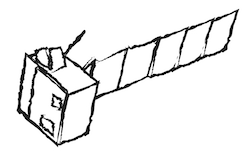
Spacecraft: A vehicle used for traveling in space.
Speed of Light: Light is the fastest thing in the universe. It travels 186,282 miles (299,792,458 meters) every second.
Star: A ball of shining gas, made mostly of hydrogen and helium, held together by its own gravity. Turning hydrogen into helium creates the energy that makes stars shine.

Sun: The star in the center of our solar system.
Supermassive: How we describe objects that have a million times (or more!) mass than our sun.
Supernova: The explosion of a star that makes it as bright as a whole galaxy.
Tectonics: Big movements of Earth’s crust. Tectonics creates mountain ranges, deep sea trenches, volcanoes, and earthquakes that can cause destructive tsunami waves that can cross oceans.
Ultraviolet: Part of the electromagnetic spectrum . It’s called ultraviolet because the waves are shorter than violet light. We can’t see ultraviolet light with our eyes, but some birds and insects can. Our sun emits ultraviolet radiation, and it can give you a sunburn if you’re outside without sunblock for too long.

Universe: All of space and time, and everything in it. It’s everything ever!
Vacuum: An empty space that doesn't have any matter .

Volcano: A mountain or hill that has an opening where lava, rock fragments, or gas erupt from deep inside a planet or moon.
Visible light: The part of the electromagnetic spectrum that we can see with our eyes. It’s all the colors of the rainbow.
Wave: A way energy moves from one place to another. Sometimes waves move materials the way water ripples in a pond move the water. Other times, waves don’t move anything around when they transfer energy. For example, X-rays and other waves on the electromagnetic spectrum don’t make any ripples when they move energy from place to place. We classify waves based on how long their wavelengths are. A wavelength is the distance from peak to peak (or valley to valley) of the wave.
X-Rays: Radiation with lots of energy made by very hot gases, stars, neutron stars, and gas around black holes. X-rays have so much energy they can pass though solid materials. They are part of the electromagnetic spectrum .
Explore Some Big Questions about Earth and Space!

What is the Big Bang?

Where does the sun get its energy?

What causes the seasons?

What is a planet?
If you liked this, you may like:
- Subscribe to BBC Science Focus Magazine
- Previous Issues
- Future tech
- Everyday science
- Planet Earth
- Newsletters
Everything you need to know about space travel (almost)
We're a long way from home...
Paul Parsons
When did we first start exploring space?
The first human-made object to go into space was a German V2 missile , launched on a test flight in 1942. Although uncrewed, it reached an altitude of 189km (117 miles).
Former Nazi rocket scientists were later recruited by both America and Russia (often at gunpoint in the latter case), where they were instrumental in developing Intercontinental Ballistic Missiles (ICBMs) – rockets capable of carrying nuclear weapons from one side of the planet to the other.

It was these super-missiles that formed the basis for the space programmes of both post-war superpowers. As it happened, Russia was the first to reach Earth orbit, when it launched the uncrewed Sputnik 1 in October 1957, followed a month later by Sputnik 2, carrying the dog Laika – the first live animal in space.
The USA sent its first uncrewed satellite, Explorer 1, into orbit soon after, in January 1958. A slew of robotic spaceflights followed, from both sides of the Atlantic, before Russian cosmonaut Yuri Gagarin piloted Vostok 1 into orbit on 12 April 1961, to become the first human being in space . And from there the space race proper began, culminating in Neil Armstrong and Buzz Aldrin becoming the first people to walk on the Moon as part of NASA's Apollo programme .
Why is space travel important?
Space exploration is the future. It satisfies the human urge to explore and to travel, and in the years and decades to come it could even provide our species with new places to call home – especially relevant now, as Earth becomes increasingly crowded .
Extending our reach into space is also necessary for the advancement of science. Space telescopes like the Hubble Space Telescope and probes to the distant worlds of the Solar System are continually updating, and occasionally revolutionising, our understanding of astronomy and physics.
- Subscribe to the Science Focus Podcast on these services: Acast , iTunes , Stitcher , RSS , Overcast
But there are also some very practical reasons, such as mining asteroids for materials that are extremely rare here on Earth.
One example is the huge reserve of the chemical isotope helium-3 thought to be locked away in the soil on the surface of the Moon . This isotope is a potential fuel for future nuclear fusion reactors – power stations that tap into the same source of energy as the Sun. Unlike other fusion fuels, helium-3 gives off no hard-to-contain and deadly neutron radiation.
However, for this to happen the first challenge to overcome is how to build a base on the Moon. In 2019, China's Chang’e 4 mission marked the beginning of a new space race to conquer the Moon, signalling their intent to build a permanent lunar base , while the NASA Artemis mission plans to build a space station, called Lunar Orbital Platform-Gateway , providing a platform to ferry astronauts to the Moon's surface.
Could humans travel into interstellar space and how would we get there?
It’s entirely feasible that human explorers will visit the furthest reaches of our Solar System. The stars, however, are another matter. Interstellar space is so vast that it takes light – the fastest thing we know of in the Universe – years, centuries and millennia to traverse it. Faster-than-light travel may be possible one day, but is unlikely to become a reality in our lifetimes.
It’s not impossible that humans might one day cross this cosmic gulf, though it won’t be easy. The combustion-powered rocket engines of today certainly aren’t up to the job – they just don’t use fuel efficiently enough. Instead, interstellar spacecraft may create a rocket-like propulsion jet using electric and magnetic fields. This so-called ‘ ion drive ’ technology has already been tested aboard uncrewed Solar System probes.

Another possibility is to push spacecraft off towards the stars using the light from a high-powered laser . A consortium of scientists calling themselves Breakthrough Starshot is already planning to send a flotilla of tiny robotic probes to our nearest star, Proxima Centauri, using just this method.
Though whether human astronauts could survive such punishing acceleration, or the decades-long journey through deep space, remains to be seen.

How do we benefit from space exploration?
Pushing forward the frontiers of science is the stated goal of many space missions . But even the development of space travel technology itself can lead to unintended yet beneficial ‘spin-off’ technologies with some very down-to-earth applications.
Notable spin-offs from the US space programme, NASA, include memory foam mattresses, artificial hearts, and the lubricant spray WD-40. Doubtless, there are many more to come.
Read more about space exploration:
- The next giant leaps: The UK missions getting us to the Moon
- Move over, Mars: why we should look further afield for future human colonies
- Everything you need to know about the Voyager mission
- 6 out-of-this-world experiments recreating space on Earth
Space exploration also instils a sense of wonder, it reminds us that there are issues beyond our humdrum planet and its petty squabbles, and without doubt it helps to inspire each new generation of young scientists. It’s also an insurance policy. We’re now all too aware that global calamities can and do happen – for instance, climate change and the giant asteroid that smashed into the Earth 65 million years ago, leading to the total extinction of the dinosaurs .
The lesson for the human species is that we keep all our eggs in one basket at our peril. On the other hand, a healthy space programme, and the means to travel to other worlds, gives us an out.
Is space travel dangerous?
In short, yes – very. Reaching orbit means accelerating up to around 28,000kph (17,000mph, or 22 times the speed of sound ). If anything goes wrong at that speed, it’s seldom good news.
Then there’s the growing cloud of space junk to contend with in Earth's orbit – defunct satellites, discarded rocket stages and other detritus – all moving just as fast. A five-gram bolt hitting at orbital speed packs as much energy as a 200kg weight dropped from the top of an 18-storey building.

And getting to space is just the start of the danger. The principal hazard once there is cancer-producing radiation – the typical dose from one day in space is equivalent to what you’d receive over an entire year back on Earth, thanks to the planet’s atmosphere and protective magnetic field.
Add to that the icy cold airless vacuum , the need to bring all your own food and water, plus the effects of long-duration weightlessness on bone density, the brain and muscular condition – including that of the heart – and it soon becomes clear that venturing into space really isn’t for the faint-hearted.
When will space travel be available to everyone?
It’s already happening – that is, assuming your pockets are deep enough. The first self-funded ‘space tourist’ was US businessman Dennis Tito, who in 2001 spent a week aboard the International Space Station (ISS) for the cool sum of $20m (£15m).
Virgin Galactic has long been promising to take customers on short sub-orbital hops into space – where passengers get to experience rocket propulsion and several minutes of weightlessness, before gliding back to a runway landing on Earth, all for $250k (£190k). In late July 2020, the company unveiled the finished cabin in its SpaceShipTwo vehicle, suggesting that commercial spaceflights may begin shortly.

Meanwhile, Elon Musk’s SpaceX , which in May 2020 became the first private company to launch a human crew to Earth orbit aboard the Crew Dragon , plans to offer stays on the ISS for $35k (£27k) per night. SpaceX is now prototyping its huge Starship vehicle , which is designed to take 100 passengers from Earth to as far afield as Mars for around $20k (£15k) per head. Musk stated in January that he hoped to be operating 1,000 Starships by 2050.
10 Short Lessons in Space Travel by Paul Parsons is out now (£9.99, Michael O'Mara)
- Buy now from Amazon UK , Foyles , WH Smith and Wordery
Share this article

- Terms & Conditions
- Privacy policy
- Cookies policy
- Code of conduct
- Magazine subscriptions
- Manage preferences

Space Terms to Explore the Boundless Universe
By: Author ESLBUZZ
Posted on Last updated: September 8, 2023
Sharing is caring!
Welcome to our article about space terms! If you’re learning English, you may find it challenging to understand some of the vocabulary used in articles and videos about space. That’s why we’ve put together this guide to help you learn some of the most common space terms and their meanings.
In this article, we’ll cover a range of space-related vocabulary, from the names of planets and stars to scientific terms used to describe space phenomena. We’ll provide clear definitions and examples of how each term is used in context, so you can start using them in your own conversations and writing.
Space Terms

Understanding Space Terms
Example sentence: The solar system has eight planets, including Earth, Mars, and Jupiter.
Example sentence: The Milky Way is a galaxy that contains billions of stars.
Example sentence: The Mars Rover is a spacecraft that has explored the surface of Mars.
Other Space Terms
Example sentence: Halley’s Comet is a famous comet that can be seen from Earth every 76 years.
Space Terms: Planets
Terrestrial planets.
Terrestrial planets are those that are primarily composed of rock or metal. They are also known as inner planets, as they are located closer to the sun than the gas giants. Here are some terms you should know when talking about terrestrial planets:
Some example sentences using these terms:
- Mercury is the smallest planet in our solar system.
- Venus has a thick atmosphere that traps heat, making it the hottest planet.
- Earth is the only known planet with life, thanks to its unique atmosphere and distance from the sun.
- Mars has a reddish appearance due to iron oxide, or rust, on its surface.
Gas giants are those that are primarily composed of gases such as hydrogen and helium. They are also known as outer planets, as they are located farther from the sun than the terrestrial planets. Here are some terms you should know when talking about gas giants:
- Jupiter is the largest planet in our solar system, with a diameter over 11 times that of Earth.
- Saturn’s rings are made up of ice, dust, and rock particles, and are visible even through small telescopes.
- Uranus has a tilted axis that causes it to experience extreme seasons, with each pole facing the sun for 42 years at a time.
- Neptune is the farthest planet from the sun, and its blue color comes from the presence of methane in its atmosphere.
Space Terms: Astronomical Objects
Stars are massive, luminous balls of gas held together by their own gravity. They are the building blocks of galaxies and the source of light and energy that sustains life on Earth. Here are some terms related to stars:
Example sentence: “Betelgeuse, a red supergiant star, is one of the brightest stars in the night sky.”
Galaxies are vast collections of stars, gas, and dust held together by gravity. They come in a variety of shapes and sizes, from spiral galaxies like our Milky Way to irregular galaxies with no defined shape. Here are some terms related to galaxies:
Example sentence: “The Andromeda Galaxy is the closest spiral galaxy to our Milky Way.”
Nebulae are clouds of gas and dust in space. They come in a variety of shapes and sizes and can be the birthplace of new stars. Here are some terms related to nebulae:
Example sentence: “The Orion Nebula is one of the brightest and most studied emission nebulae in the sky.”
Space Terms: Space Exploration
Spacecraft are vehicles designed to travel and operate in space. They come in different shapes and sizes, and each one has a specific purpose. Here are some spacecraft terms you should know:
Example sentences:
- The Mars Rover has been exploring the surface of Mars for many years.
- The Hubble Space Telescope is a satellite that orbits the Earth and takes pictures of the universe.
Space Missions
Space missions are projects designed to explore space and gather data. They can be manned or unmanned, and they can have different objectives. Here are some space mission terms you should know:
- The Apollo missions were a great achievement for the United States.
- The Cassini-Huygens mission discovered many interesting things about Saturn and its moons.
Space Terms: Astrophysics Concepts
Black holes.
Black holes are one of the most fascinating and mysterious objects in the universe. They are regions in space where the gravitational pull is so strong that nothing, not even light, can escape. Black holes form when massive stars die and their cores collapse under the force of gravity.
Here are some terms related to black holes:
Example sentence: “The event horizon of a black hole marks the point of no return beyond which nothing can escape.”
Dark Matter
Dark matter is a mysterious substance that makes up about 85% of the matter in the universe. It does not interact with light, so it cannot be directly observed, but its effects on the motion of galaxies and galaxy clusters can be detected. Scientists believe that dark matter is made up of particles that do not interact with normal matter except through gravity.
Here are some terms related to dark matter:
Example sentence: “Scientists are still trying to discover the nature of dark matter and what particles it is made up of.”
Space Terms: Cosmology
Cosmology is the study of the universe and its origins. It is a branch of astronomy that focuses on the large-scale structure of the universe, including its origins, evolution, and eventual fate. In this section, we will explore some of the key terms used in cosmology.
Big Bang Theory
The Big Bang Theory is the prevailing cosmological model that explains the origins of the universe. According to this theory, the universe began as a singularity, a point of infinite density and temperature. This singularity then expanded rapidly, creating space and time as it did so. As the universe expanded, it cooled and matter began to form, eventually leading to the formation of galaxies, stars, and planets.
Some key terms related to the Big Bang Theory include:
Example sentence: “The Big Bang Theory is the most widely accepted explanation for the origins of the universe.”
Multiverse Theory
The Multiverse Theory is the idea that there may be multiple universes, each with its own set of physical laws and properties. This theory is still speculative, but it has gained popularity in recent years as a way to explain some of the mysteries of the universe, such as the fine-tuning of physical constants that make life possible.
Some key terms related to the Multiverse Theory include:
Example sentence: “The Multiverse Theory is a fascinating idea that challenges our understanding of the universe.”
Frequently Asked Questions
What are some common space terms used in space exploration?
Space exploration involves many technical terms that are used to describe different aspects of space travel and astronomy. Some common terms include:
- Astronaut: A person who travels into space.
- Rocket: A vehicle that is used to launch spacecraft into orbit.
- Satellite: An object that orbits around a planet or other celestial body.
- Telescope: An instrument used to observe distant objects in space.
- Gravity: The force that attracts two objects towards each other.
What are some space terms used to describe celestial bodies?
Celestial bodies are objects in space that are outside of the Earth’s atmosphere. Some space terms used to describe celestial bodies include:
- Planet: A large object that orbits around a star and has cleared its orbit of other debris.
- Moon: A natural satellite that orbits around a planet.
- Asteroid: A small, rocky object that orbits around the Sun.
- Meteor: A small piece of debris that enters the Earth’s atmosphere and burns up.
- Comet: A small, icy object that orbits the Sun and has a tail of gas and dust.
What are some examples of space-related jargon?
Space-related jargon refers to technical terms that are specific to space exploration and astronomy. Some examples include:
- EVA: Extravehicular activity, or a spacewalk.
- LEO: Low Earth orbit, the region of space around the Earth that is closest to the planet’s surface.
- TLI: Translunar injection, the maneuver used to send a spacecraft from Earth to the Moon.
- G-force: The force that an object experiences due to acceleration.
- Lagrange point: A point in space where the gravitational forces of two large bodies balance each other out.
What is the significance of the ‘zero gravity’ in space vocabulary?
Zero gravity refers to the condition in which there is no apparent gravitational force acting on an object. In space, objects appear to be weightless because they are in freefall around the Earth or another celestial body. This can cause astronauts to experience a feeling of weightlessness, which can be disorienting at first.
"}},{"@type":"Question","name":"What are some words associated with the study of astronomy?","acceptedAnswer":{"@type":"Answer","text":"
Astronomy is the study of celestial objects and phenomena. Some words associated with astronomy include:
- Galaxy: A system of stars, gas, and dust held together by gravity.
- Nebula: A cloud of gas and dust in space.
- Supernova: A powerful explosion that occurs when a star runs out of fuel.
- Black hole: A region of space with a gravitational pull so strong that nothing can escape.
- Comet: A small, icy object that orbits the Sun.
"}},{"@type":"Question","name":"What is the meaning of the term 'orbit' in space vocabulary?","acceptedAnswer":{"@type":"Answer","text":"
An orbit is the path that an object takes as it revolves around another object in space. For example, the Moon orbits around the Earth, while the Earth orbits around the Sun.
"}},{"@type":"Question","name":"What are some words used to describe celestial bodies?","acceptedAnswer":{"@type":"Answer","text":"
Celestial bodies are objects in space that are outside of the Earth's atmosphere. Some words used to describe celestial bodies include:
- Meteor: A small piece of debris that enters the Earth's atmosphere and burns up.
"}},{"@type":"Question","name":"What are some examples of space-related jargon?","acceptedAnswer":{"@type":"Answer","text":"
- LEO: Low Earth orbit, the region of space around the Earth that is closest to the planet's surface.
"}},{"@type":"Question","name":"What is the significance of the term 'zero gravity' in space vocabulary?","acceptedAnswer":{"@type":"Answer","text":"
- Recent Posts
- What’s the Plural of This? Mastering English Grammar Made Easy! - October 12, 2023
- Plural of Series: Understanding the World of Plural Nouns - October 11, 2023
- Plural of Cheese: Cheese or Cheeses? Master Plurals Today! - October 11, 2023
Related posts:
- 9 Countries that Start with E: Explore these Exciting E Countries
- 19 Marvelous Countries that Start with M You Need to Know!
- 7 Countries that Start with U for Future Unbelievable Trips
- Wings of Wonder: A Comprehensive List of Birds Found Across the World

Suggested Searches
- Climate Change
- Expedition 64
- Mars perseverance
- SpaceX Crew-2
- International Space Station
- View All Topics A-Z
Humans in Space
Earth & climate, the solar system, the universe, aeronautics, learning resources, news & events.
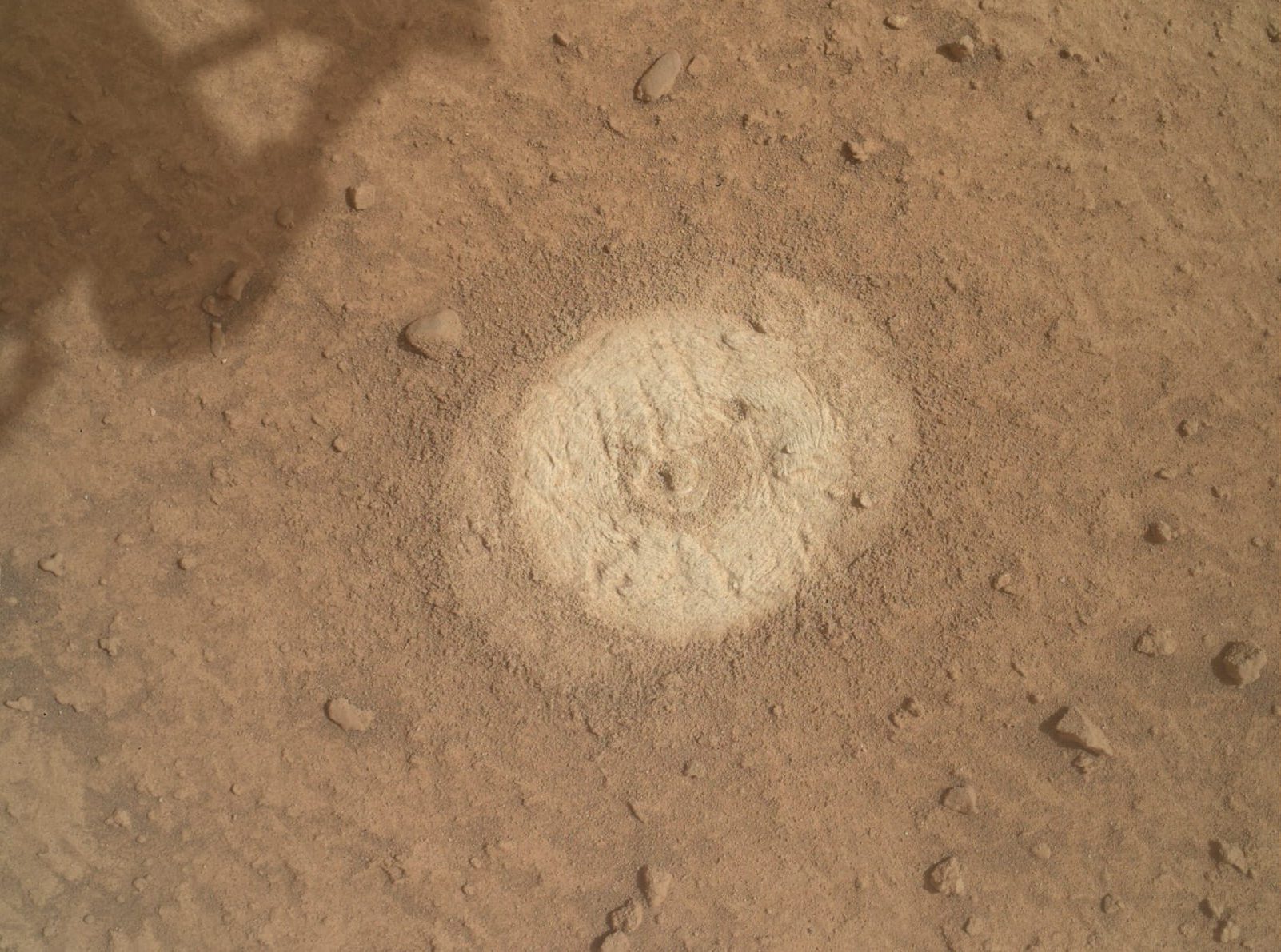
Sols 4214–4215: The Best Laid Plans…
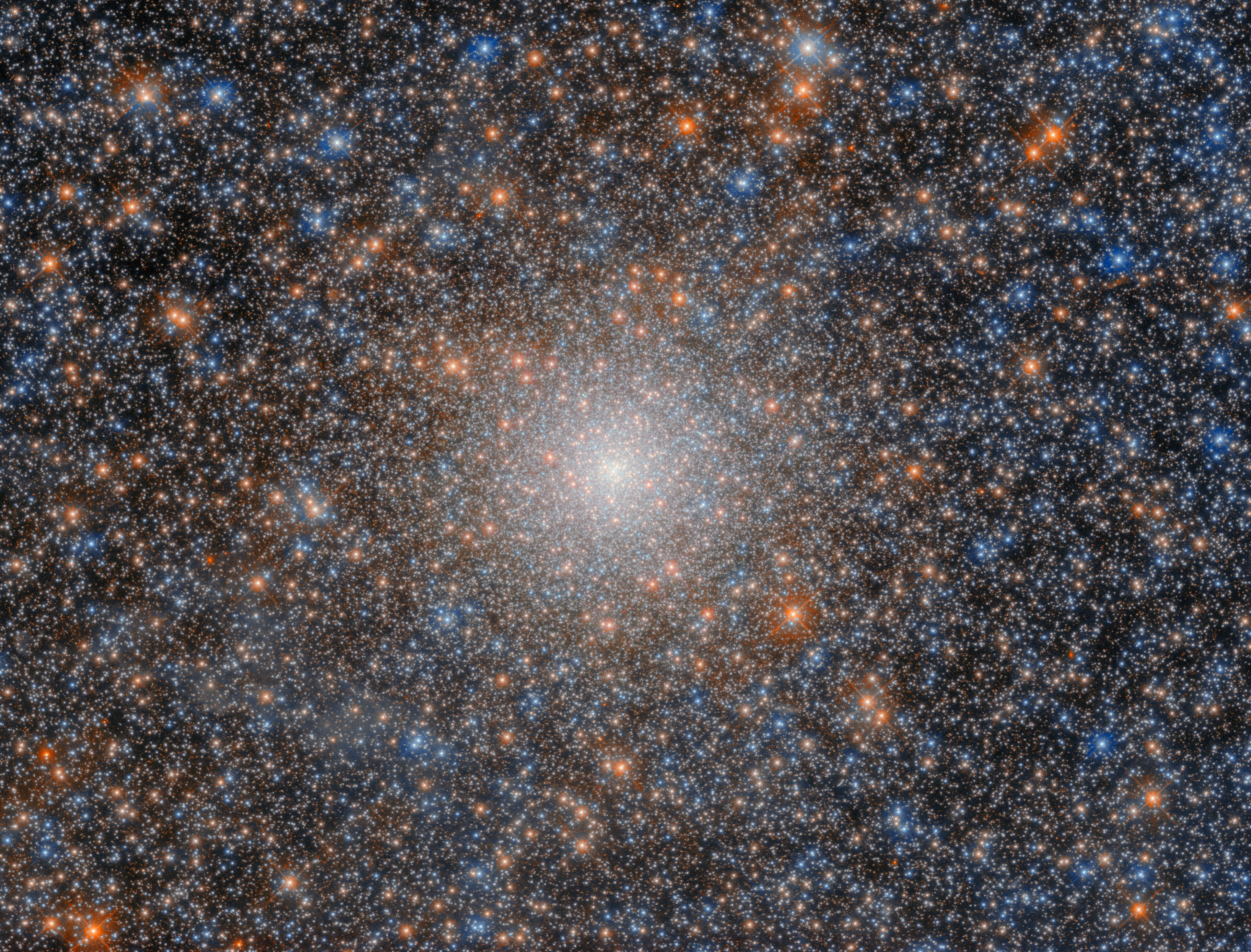
Hubble Observes a Cosmic Fossil
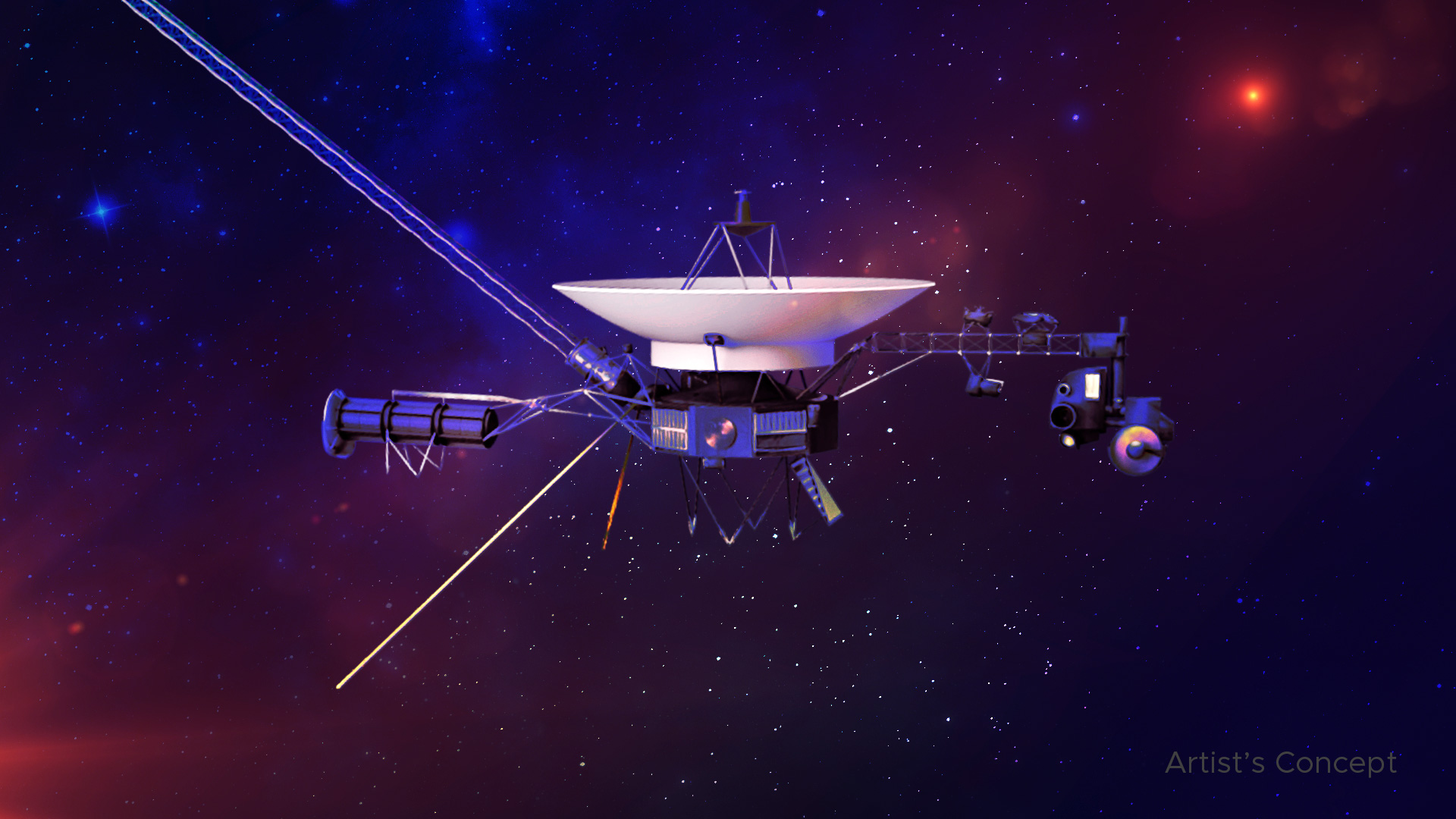
Voyager 1 Returning Science Data From All Four Instruments
- Search All NASA Missions
- A to Z List of Missions
- Upcoming Launches and Landings
- Spaceships and Rockets
- Communicating with Missions
- James Webb Space Telescope
- Hubble Space Telescope
- Why Go to Space
- Commercial Space
- Destinations
- Living in Space
- Explore Earth Science
- Earth, Our Planet
- Earth Science in Action
- Earth Multimedia
- Earth Science Researchers
- Pluto & Dwarf Planets
- Asteroids, Comets & Meteors
- The Kuiper Belt
- The Oort Cloud
- Skywatching
- The Search for Life in the Universe
- Black Holes
- The Big Bang
- Dark Energy & Dark Matter
- Earth Science
- Planetary Science
- Astrophysics & Space Science
- The Sun & Heliophysics
- Biological & Physical Sciences
- Lunar Science
- Citizen Science
- Astromaterials
- Aeronautics Research
- Human Space Travel Research
- Science in the Air
- NASA Aircraft
- Flight Innovation
- Supersonic Flight
- Air Traffic Solutions
- Green Aviation Tech
- Drones & You
Technology Transfer & Spinoffs
- Space Travel Technology
- Technology Living in Space
- Manufacturing and Materials
- Science Instruments
- For Kids and Students
- For Educators
- For Colleges and Universities
- For Professionals
- Science for Everyone
- Requests for Exhibits, Artifacts, or Speakers
- STEM Engagement at NASA
- NASA's Impacts
- Centers and Facilities
- Directorates
- Organizations
- People of NASA
- Internships
- Our History
- Doing Business with NASA
- Get Involved
- Aeronáutica
- Ciencias Terrestres
- Sistema Solar
- All NASA News
- Video Series on NASA+
- Newsletters
Social Media
- Media Resources
- Upcoming Launches & Landings
- Virtual Events
- Sounds and Ringtones
- Interactives
- STEM Multimedia

Investigating the Origins of the Crab Nebula With NASA’s Webb
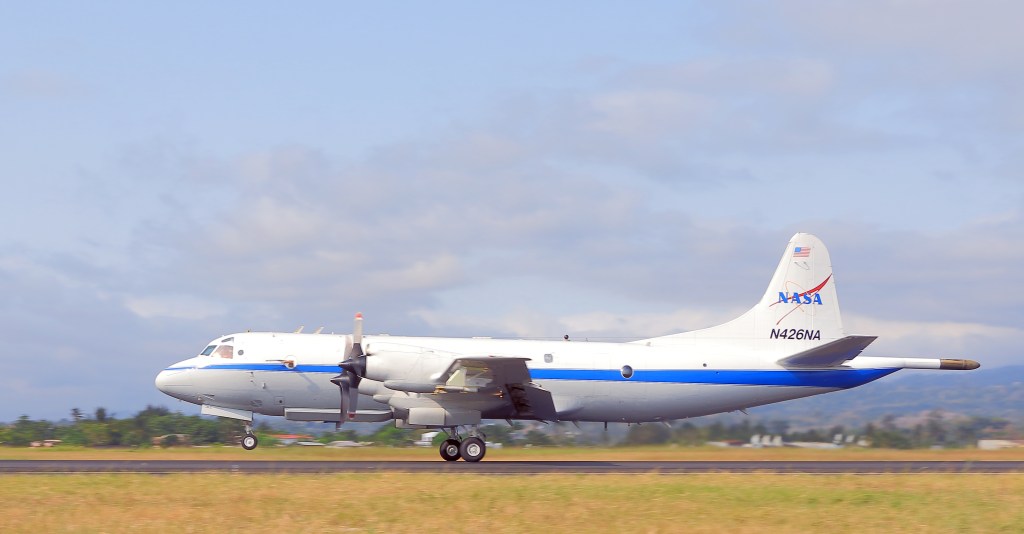
NASA-Led Mission to Map Air Pollution Over Both U.S. Coasts

NASA’s Wallops Flight Facility to Launch Student Experiments

Lakita Lowe: Leading Space Commercialization Innovations and Fostering STEM Engagement

NASA’s Repository Supports Research of Commercial Astronaut Health
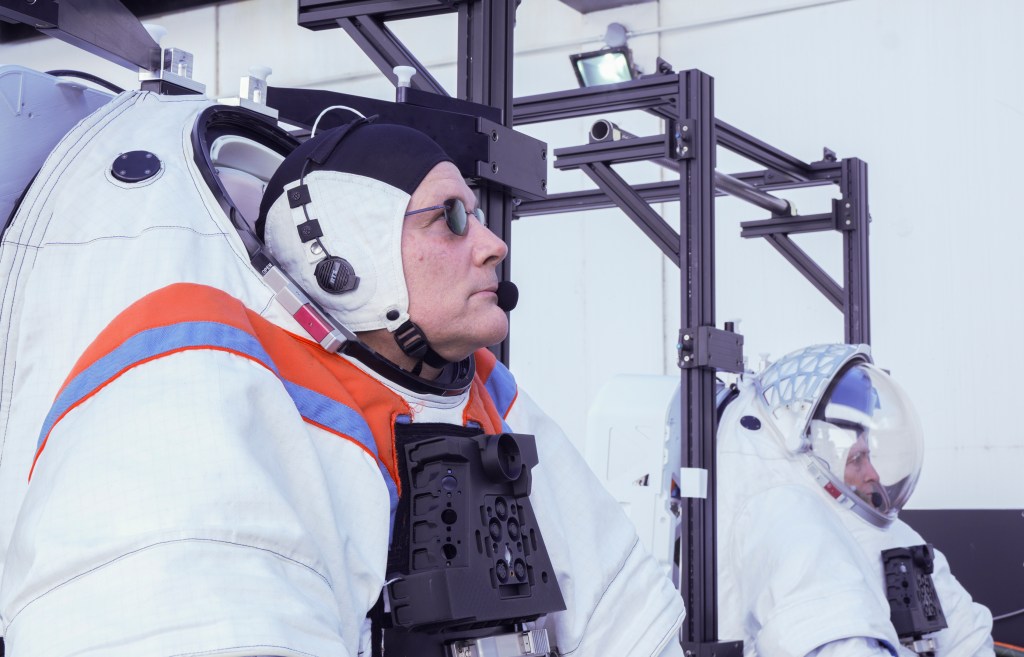
NASA Astronauts Practice Next Giant Leap for Artemis
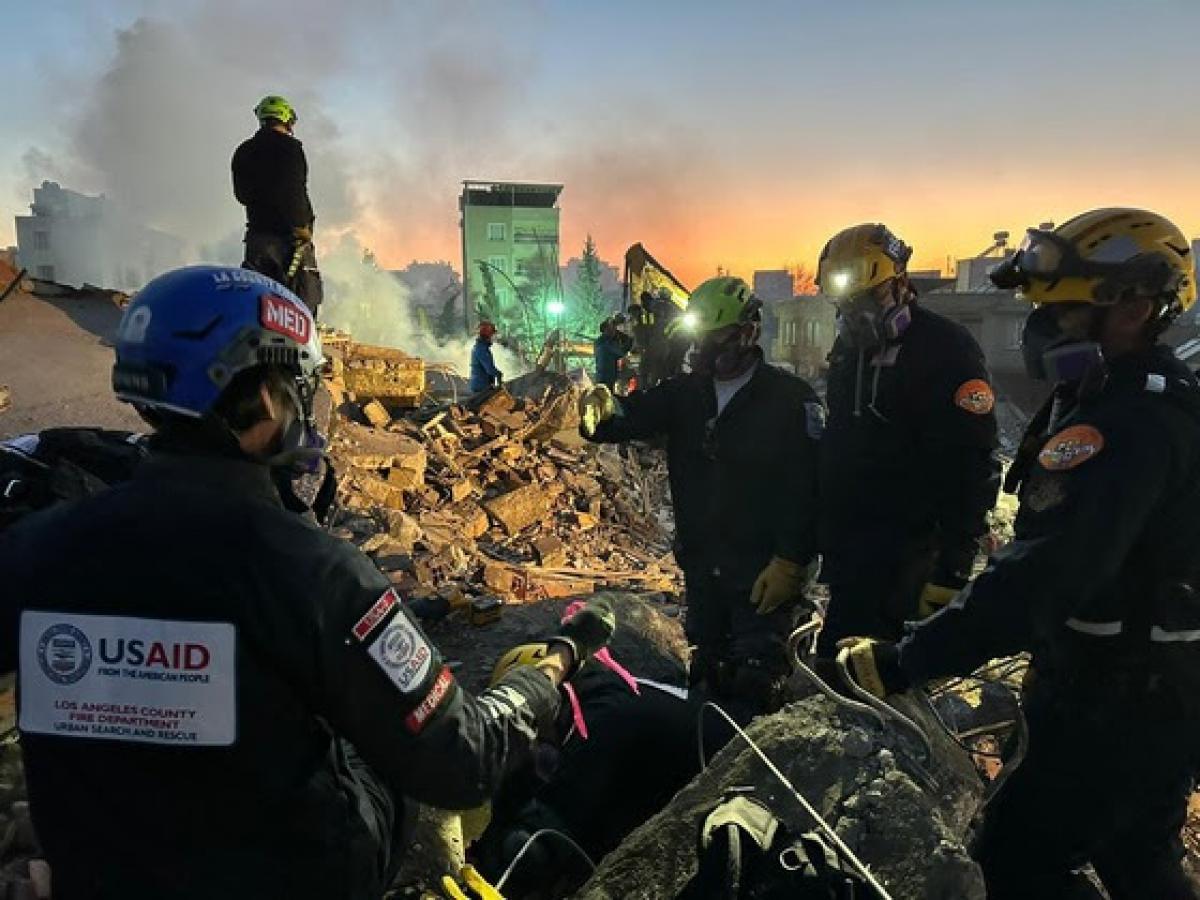
NASA Announces New System to Aid Disaster Response

Amendment 21: A.3 Ocean Biology and Biogeochemistry: NSPIRES cover page issue and Delay of Proposal Due Date
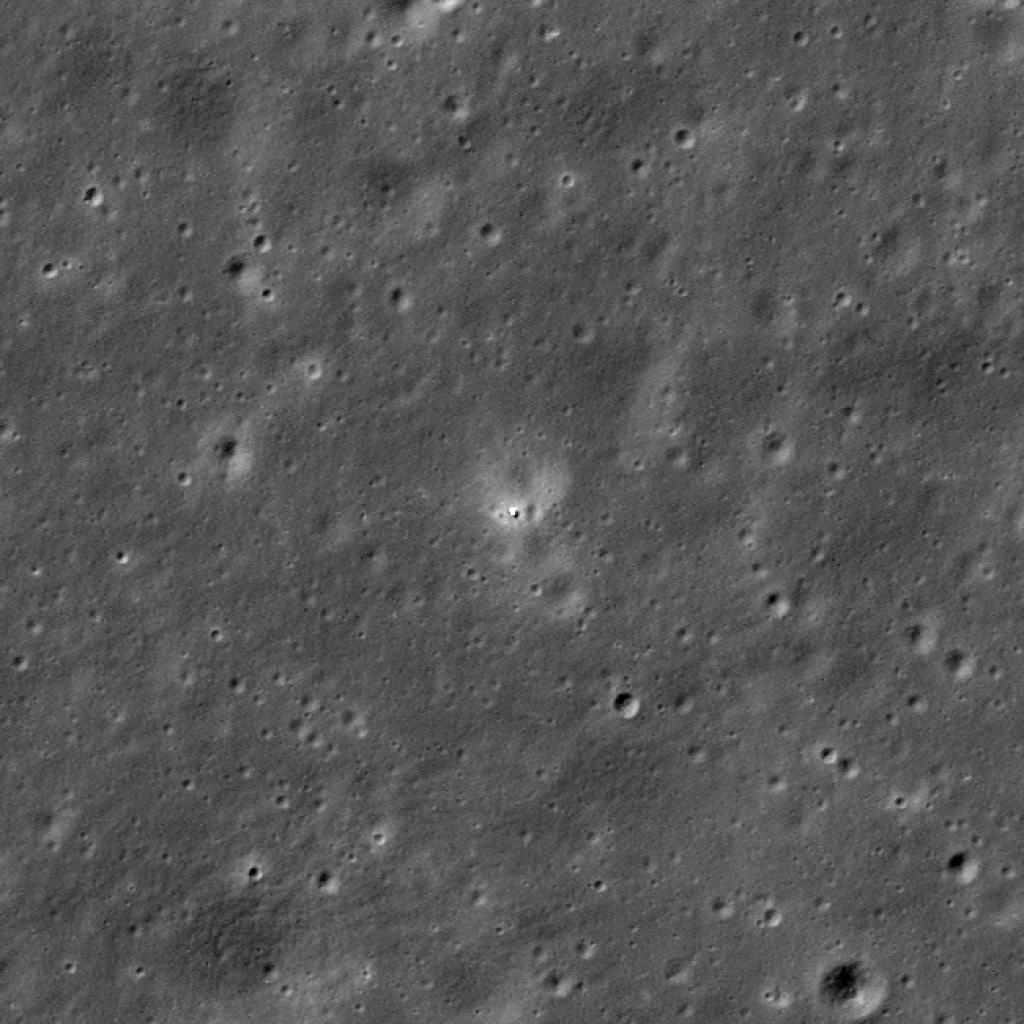
NASA’s LRO Spots China’s Chang’e 6 Spacecraft on Lunar Far Side

The Next Full Moon is the Strawberry Moon

NASA’s Perseverance Fords an Ancient River to Reach Science Target
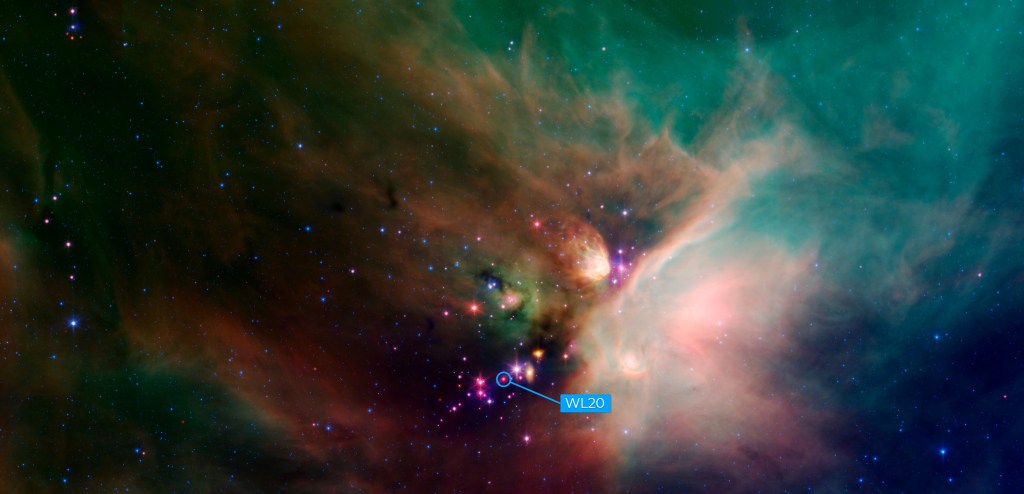
NASA’s Webb Reveals Long-Studied Star Is Actually Twins
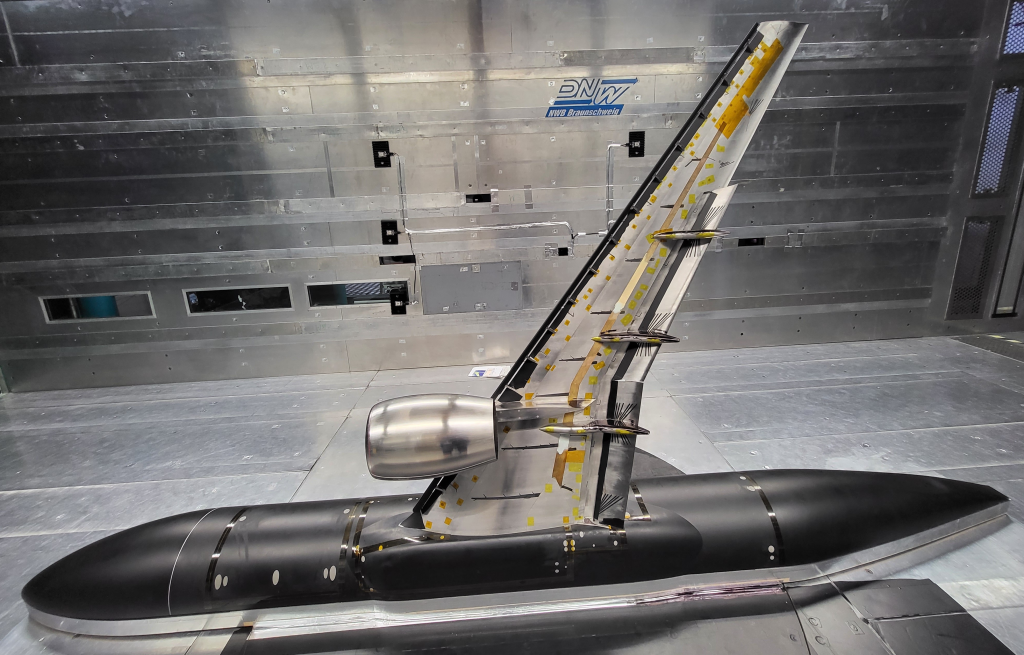
Globetrotting NASA Research Model Increases Accuracy

ARMD Solicitations

Winners Announced in Gateways to Blue Skies Aeronautics Competition
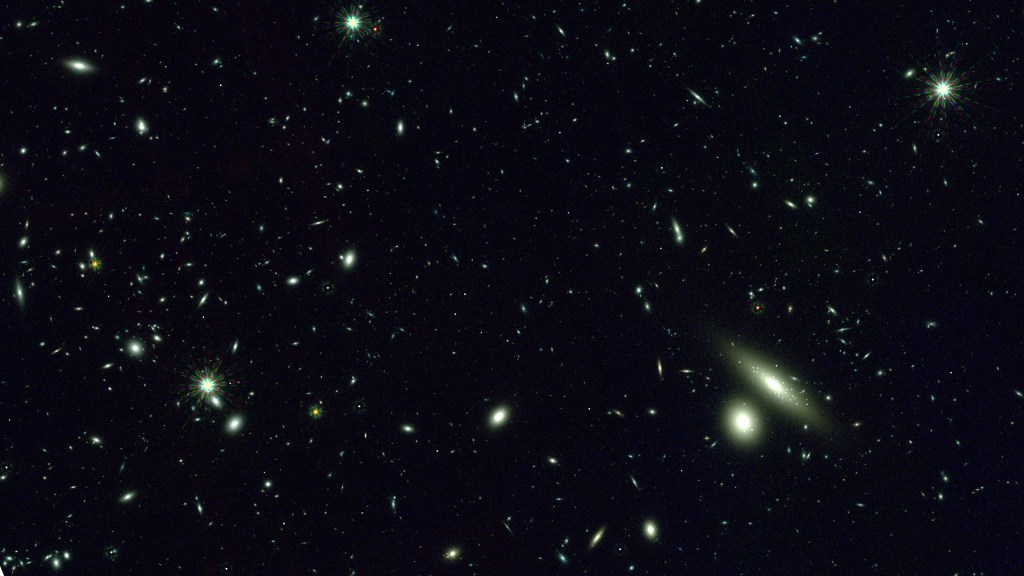
NASA’s Roman Mission Gets Cosmic ‘Sneak Peek’ From Supercomputers
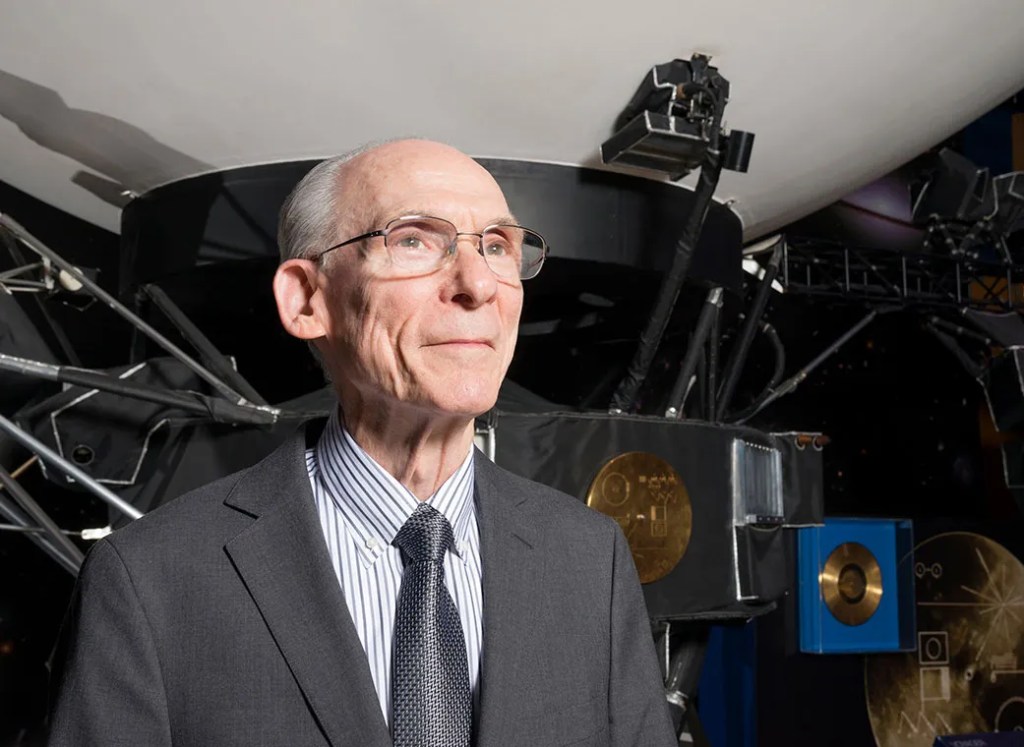
Ed Stone, Former Director of JPL, Voyager Project Scientist, Dies

Food Safety Program for Space Has Taken Over on Earth

Artemis Generation Shines During NASA’s 2024 Lunabotics Challenge

NASA Joins National Space Council in Celebration of Black Space Week

Astronauta de la NASA Frank Rubio

Diez maneras en que los estudiantes pueden prepararse para ser astronautas

Astronauta de la NASA Marcos Berríos
Space travel.
The path to the Moon, Mars, and beyond requires technologies to get us where we need to go quickly, safely and efficiently. Space travel includes launch and in-space propulsion systems, cryogenic fluid management, and thermal management, as well as navigation and landing systems to get our supplies, equipment, and robotic or human explorers to diverse surface destinations.
Quick Facts
NASA’s Space Launch System is 17 feet taller than the Statue of Liberty and produced 15% more thrust than the Saturn V at liftoff.
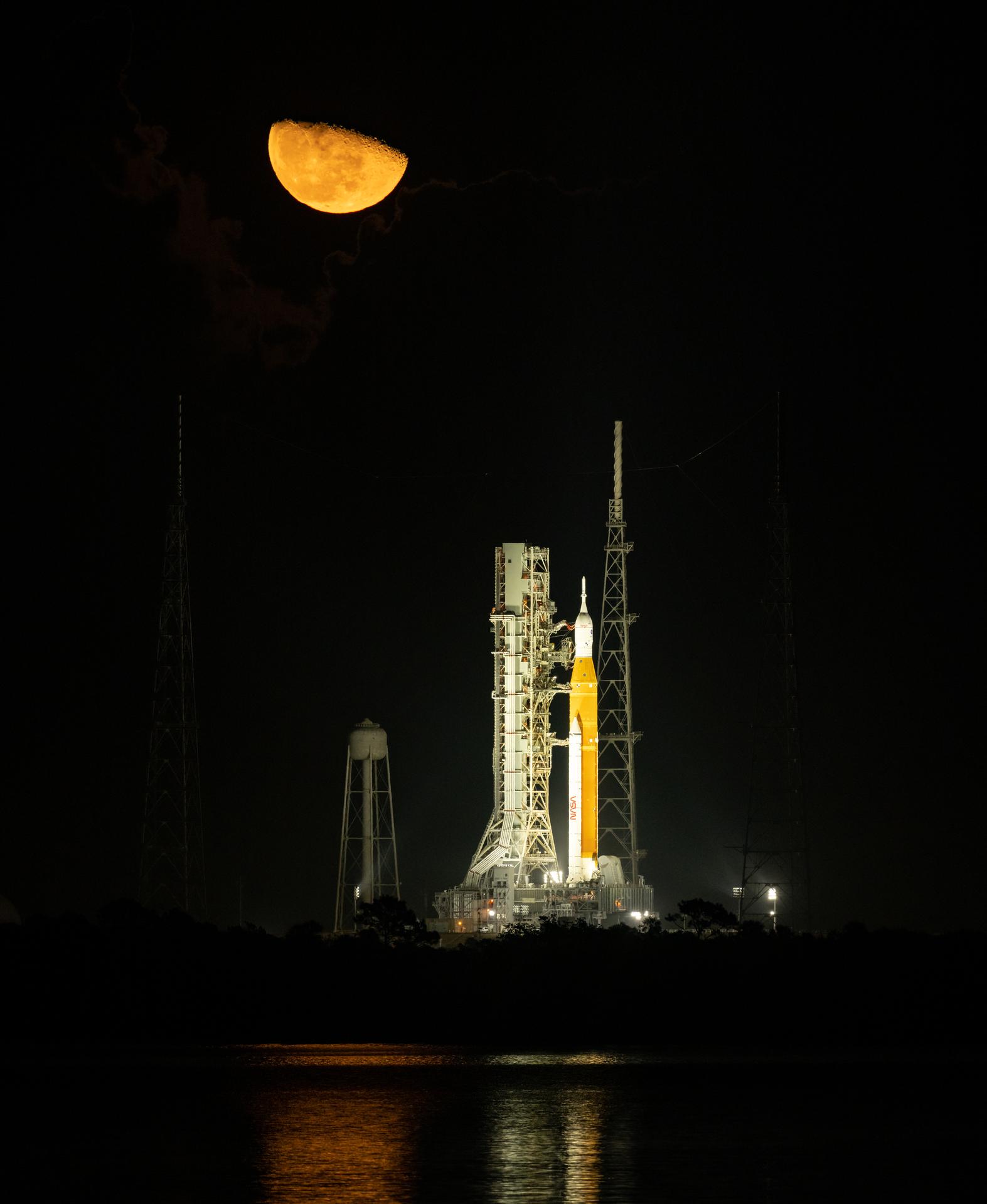
The last nuclear thermal rocket engine tests conducted by the United States occurred more than 50 years ago. NASA and DARPA are partnering on the Demonstration Rocket for Agile Cislunar Operations, or DRACO, program and together, we’ll develop and demonstrate advanced nuclear thermal propulsion technology as soon as 2027.
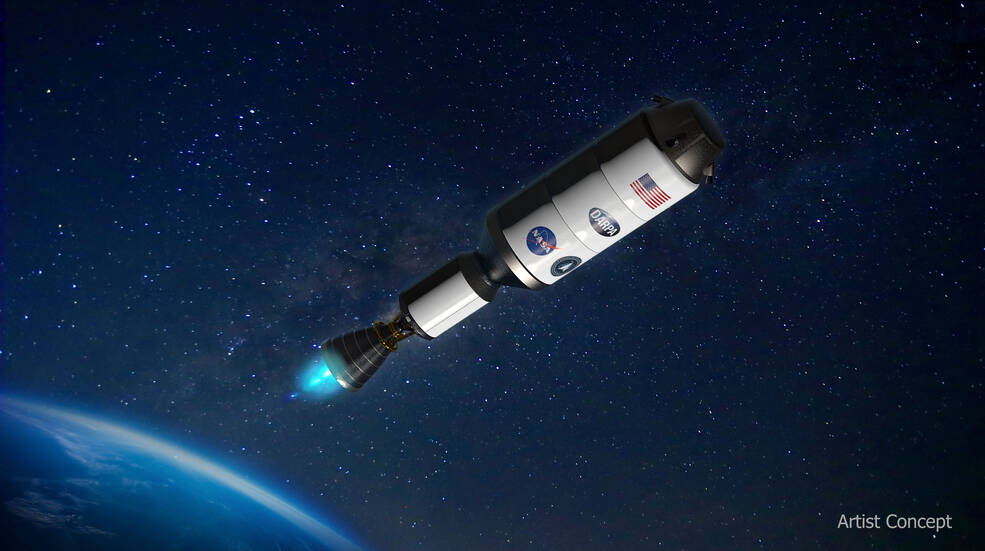
Mission and Impact
NASA seeks to improve our ability to access and travel through space; land more mass in more locations throughout the solar system; live and work in deep space and on planetary bodies; build next generation air vehicles, and transform the ability to observe the universe and answer profound questions in earth and space sciences.

Latest Space Travel News
NASA Announces Winners of Power to Explore Challenge

NASA’s SERT II: ‘A Genuine Space Success Story’

NASA Announces Semifinalists of Power to Explore Challenge

NASA Artemis Mission Progresses with SpaceX Starship Test Flight

How Do Spacecraft Slow Down? We Asked a NASA Technologist
How do spacecraft slow down? Rigid heat shields and retropropulsion have been the favorites of engineers for years. Now NASA is testing a new inflatable heat shield technology that could allow us to carry even larger payloads to worlds with atmospheres.
NASA Technology
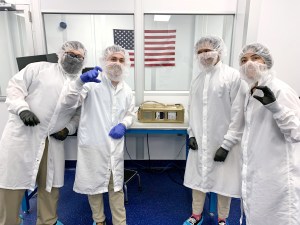
Explore Technology Areas
Space Technology Mission Directorate

@NASA_Technology

@NASATechnology

NASA Space Tech Channel
educational support

Science & Technology
Esa science & technology - spacecraft glossary.
- Show All Missions
- Students explore Saturn and its moons in the Cassini competition
- Be a 'Cassini Scientist for a Day' – 2016/2017 competition is open
- Transit of Mercury schools challenge
- Send your drawing into space with CHEOPS
- Mars Express VMC Imaging Campaign
- Happy faces at ESA's summer teacher workshop
- Save the dates - ESA Summer and Autumn workshops for teachers 2017
- Space Education International Workshop 2016
- Space Education International Workshop
- ESA once again brings European teachers to 'space classrooms' at ESTEC
- Brainstorming
- Solar System
- Publications
- Spacecraft Models
- Spacecraft Orbits
- Miscellaneous
- Interactive
- Little Books of Gaia
- Cut-out & Build
- Exercises in Astronomy
- Teacher Notes
Asset Publisher
Spacecraft glossary.
AOCS See Attitude and Orbit Control System
Apogee The apogee is the point in the orbit of a body, such as, the Moon or an artificial satellite that is furthest from the Earth. The path that these bodies take as they orbit the Earth is in the shape of an ellipse, rather than a perfect circle. (Also, see Perigee)
Attitude Attitude refers to the orientation of the spacecraft in space.
Attitude and Orbit Control System The Attitude and Orbit Control System (AOCS) monitors and controls the spacecraft's orientation (attitude) and its orbit. It includes: a computer, Star Trackers, Sun Acquisition Sensors and reaction wheels. One function of this system is to make sure that the spacecraft reaches and maintains its planned operational orbit. When a spacecraft is launched the launcher hauls it through Earth's atmosphere and then releases it on the general trajectory it needs to get into orbit. Once separated from the launcher (see separation ring), the AOCS can command the small thrusters onboard the spacecraft to bring it into its operational orbit. This system also ensures the spacecraft is pointing in the right direction, so that the onboard scientific instruments are looking towards the desired astronomical target and that the telecommunication antenna can transmit to ground-stations on Earth. In addition, this system steers, or slews, the spacecraft so that the scientific instruments can view different parts of the sky and keeps it stable during observations. (See Reaction Control System, Reaction wheels, Star Tracker, and Sun Acquisition Sensor).
Coded-mask imaging Gamma rays and X-rays are extremely difficult to focus using traditional lenses and mirrors, if not impossible in the case of gamma-rays. Therefore, the three instruments that detect high-energy radiation onboard INTEGRAL rely on a technique known as coded-mask imaging. A coded-mask telescope is a pinhole camera with not just one but many pinholes. INTEGRAL's IBIS, SPI and JEM-X don't have a system of lenses and mirrors. Instead, they have a mask that is made up of a pattern of holes. The high-energy radiation can pass through the holes and onto the detector, but is blocked by the opaque parts of the mask. The mask creates a shadow pattern, so when gamma rays pass through the holes from a different direction the shadow pattern falls onto a different place of the detector. These overlapping patterns are then disentangled by computer software that knows the pattern of the mask's shadow, and converted into a map or image of the gamma-ray sources in the sky.
Communications See telecommunications
Coolers On Earth, air and water transport heat from one place to another, distributing the temperature evenly. In the harsh environment of space there is no air or water, or any other medium to transport heat. As a spacecraft orbits the Earth it is exposed to extreme differences in temperature depending on whether it is illuminated by the Sun, or Earth or not. The detectors of INTEGRAL's spectrometer work best within a particular low temperature range and therefore need to be protected from the extreme heat or cold. On the INTEGRAL spacecraft this is achieved using electric heaters and coolers (see Heaters, and Thermal control system).
Data handling system This system is an onboard computer that manages all of the spacecraft's activity and includes a clock and a telemetry system. It interprets and distributes commands sent by the team of Ground Operation Controllers and collects and processes telemetry data ready to send back to Earth (see Telecommand, and Telemetry).
Heaters On Earth, air and water transport heat from one place to another, distributing the temperature evenly. In the harsh environment of space there is no air or water, or any other medium to transport heat. As a spacecraft orbits the Earth it is exposed to extreme differences in temperature depending on whether it is illuminated by the Sun or not. The instruments of a spacecraft work best within a particular temperature range and therefore need to be protected from the extreme heat or cold. On the INTEGRAL spacecraft this is achieved using electric heaters and coolers. The heaters are employed for example when the spacecraft is in the Earth's shadow (during a so-called eclipse). (See Coolers, and Thermal control system).
Hold-down These are small devices that keep parts of the spacecraft such as antennas and solar arrays into a stowed position during launch. Once the spacecraft has been launched small explosive charges release the hold-downs to allow these parts to unfold.
IBIS See Imager on-Board the Integral Satellite
Imager on-Board the Integral Satellite The Imager on-Board the Integral Satellite (IBIS) provides high resolution images of many different types of celestial objects. A few examples are, binary star systems where one of the components is a black hole, a white dwarf or a neutron star; gamma-ray bursts - the most powerful explosions known in the Universe; active galactic nuclei – galaxies emitting large amounts of energy from a small, dense source at their centres and clusters of galaxies. IBIS produces sharper images than any previous gamma-ray instrument.
JEM-X See Joint European X-Ray Monitor
Joint European X-Ray Monitor The Joint European X-Ray Monitor (JEM-X) makes observations simultaneously with the two main gamma–ray detectors, SPI and IBIS. JEM-X plays a crucial role in the detection and identification of gamma-ray sources by making observations in the lower X-ray energy band and producing images. As with IBIS and SPI, this instrument works using the coded-mask technique.
MLI See Multi Layer Insulation
Multi Layer Insulation Multi Layer Insulation (MLI) is a special foil that is used as a thermal insulation material. A spacecraft is wrapped in this material to protect it from the harsh thermal environment in space. As the name indicates the foil is built up from several layers of different materials, to achieve the desired insulating properties.
OMC See Optical Monitoring Camera
Optical Monitoring Camera The Optical Monitoring Camera (OMC) uses a CCD (charge-coupled device) to take images of the visible light coming from the sources that INTEGRAL's high-energy instruments observe at the same time in the gamma-ray and X-ray parts of the spectrum. These images also provide data for accurately calculating the pointing of the spacecraft's scientific instruments. The OMC tells INTEGRAL astronomers exactly where the SPI or IBIS instruments are looking in the sky. This is important when looking at high-energy emission from celestial sources because this emission can change very quickly.
Payload Module The payload module (PLM) carries INTEGRAL'S four scientific instruments and is mounted on top of the service module (see SVM). These modules form the two main parts of the INTEGRAL spacecraft.
Perigee The perigee is the point in the orbit of a body, such as, the Moon or an artificial satellite that is closest to the Earth. The path that these bodies take as they orbit the Earth is in the shape of an ellipse, rather than a perfect circle. (Also, see Apogee)
PLM See Payload Module
Radiator A radiator is a passive cooler that removes excess heat from the spacecraft via a surface that radiates heat out into space.
Reaction wheels Reaction wheels (sometimes called momentum wheels) are small spinning wheels that are used to control the spacecraft's attitude. If the Star Tracker or Sun Acquisition Sensor detect that the spacecraft is drifting from its desired orientation, the spinning reaction wheels speed up or slow down to correct the position. A spacecraft or satellite that uses reaction wheels is known as a 'three-axis stabilised' satellite. (See Attitude and Orbit Control System).
SAS See Sun Acquisition Sensor
Scientific instruments The INTEGRAL gamma-ray observatory has four scientific instruments; SPI, IBIS, JEM-X and OMC, that make observations in order for the mission's science objectives to be achieved. INTEGRAL's mission objectives involve providing new insight into some of the most violent and exotic objects in the Universe.
Separation Ring The separation ring is the connecting element between a spacecraft and the launcher. It is an important mechanism that releases, or separates, the spacecraft from the launcher at just the right moment once they have reached space.
Service Module The service module (SVM) is the part of a spacecraft that holds all the utilities and services required to operate the spacecraft and the scientific instruments that are housed in the payload module (see PLM). These essential systems look after the spacecraft's electrical power (via the Solar Array), attitude, orbit, temperature (thermal control), data handling and telecommunications.
Solar Array A spacecraft's Solar Array is made up of a large number of solar cells that convert light from the Sun into electric energy for operating the spacecraft and the instruments on board. Solar arrays can be placed flat on the hull of the spacecraft, or attached as wings that extend outward. Solar Array wings can also be given the ability to turn and orient to catch the maximum amount of sunlight available at any position (see Solar Array Drive Mechanism). For fixed wings this is achieved instead by the orientation of the entire spacecraft. When a spacecraft orbits a Solar System body (like a planet or moon) there are times when the spacecraft is in the shadow of the object that it is orbiting and the Solar Arrays are not illuminated by the Sun. During these periods, called eclipses, the spacecraft runs on power stored in batteries.
Spectrometer The Spectrometer on Integral (SPI) performs high resolution spectrography. It measures the energy of gamma rays that are detected. These gamma rays are produced by some of the most energetic phenomena in the Universe, such as neutron stars, black holes and supernovae.
SPI See Spectrometer
Star Tracker The Star Tracker is the primary compass of a spacecraft. It compares the image of stars in its field of view with a star map of the sky. As a result the spacecraft navigation system receives information about the orientation and attitude of the spacecraft in its orbit. This is a critical function and therefore spacecraft usually are equipped with two Star Trackers just in case one is no longer able to function. (See Attitude and Orbit Control System)
STR See Star Tracker
Sun Acquisition Sensor The Sun Acquisition Sensor (sometimes shortened to Sun Sensor) is similar to the Star Tracker. It is a device to determine the orientation of the spacecraft that uses the Sun rather than the stars. Sun Sensors play an important role should there be an emergency on the spacecraft. For example, if for an unknown reason the spacecraft stops operating normally and the spacecraft does not report back to ground as it routinely should, the spacecraft's onboard computer will declare an emergency. The spacecraft then shuts down all but the essential systems and is put into a slow spin, during which the Sun Sensor searches for the Sun. Once the Sun has been found the Solar Arrays are orientated towards the Sun to charge the batteries. One by one other systems onboard the spacecraft, such as the Star Tracker, begin to operate. The spacecraft then turns the communications antenna to point towards the Earth so that it can transmit its status and await new instructions from the Ground Control Operators at the European Space Agency's Operation Centre (ESOC). (See Attitude and Orbit Control System)
SVM See service Module
Telecommand Telecommands are the commands sent from Earth to the spacecraft to operate it remotely. Typically these include instructions for the spacecraft pointing, changing system or instrument settings, and performing observations.
Telecommunications system This system consists of antennas and radio equipment that are used to transmit and receive radio signals to and from Earth (see Telecommand and Telemetry).
Telemetry Telemetry is the data that are sent from the spacecraft down to Earth. Telemetry contains information about the health of the spacecraft and its instruments and the data gathered from observations made by the payload of scientific instruments.
Thermal control system This system monitors the temperature and keeps all parts of the spacecraft within specified temperature limits so that all the equipment doesn't get too hot or too cold (see Coolers, Heaters and Radiator).
ShortUrl Portlet
Https://sci.esa.int/s/abkdjow, images and videos, related publications, related links, integral (in depth), integral (overview), integral spacecraft photographs and artist's impressions, integral payload images, integral spacecraft blueprints, project 4: build, integral's vital statistics, design: further information, competition for secondary school students, project 3: design, documentation.

IMAGES
VIDEO
COMMENTS
Light time -- The amount of time it takes light or radio signals to travel a certain distance at light speed. Light year -- A measure of distance, the distance light travels in one year, about 63,197 au.
In short, an orbit is the gravitationally curved trajectory of an object in space. In other words, an orbit is the circular motion in which objects in space travel due to gravity's pull. For example, the moon orbits around the Earth and the Earth orbits around the sun in a circular motion.
Meteorite – Rock from space that survives as it passes through the earth’s atmosphere and falls to the ground. Meteoroid – Small rock that orbits the sun. Microgravity – A condition the force of gravity is very low, producing a near-weightless environment.
Solar wind: The constant stream of particles and energy emitted by the sun. Space weather: The conditions in space that can affect Earth, satellites, and space travel. Space weather is mostly the result of solar wind and solar storms. Spacecraft: A vehicle used for traveling in space.
Spaceflight, flight beyond Earth’s atmosphere. This article deals with the basic concepts associated with the launch and return of unmanned and manned spacecraft and their travel, navigation, and rendezvous and docking in space.
Everything you need to know about space travel (almost) - BBC Science Focus Magazine.
Space exploration, investigation, by means of crewed and uncrewed spacecraft, of the reaches of the universe beyond Earth’s atmosphere and the use of the information so gained to increase knowledge of the cosmos and benefit humanity. Learn more about space exploration in this article.
That’s why we’ve put together this guide to help you learn some of the most common space terms and their meanings. In this article, we’ll cover a range of space-related vocabulary, from the names of planets and stars to scientific terms used to describe space phenomena.
Space travel includes launch and in-space propulsion systems, cryogenic fluid management, and thermal management, as well as navigation and landing systems to get our supplies, equipment, and robotic or human explorers to diverse surface destinations.
On Earth, air and water transport heat from one place to another, distributing the temperature evenly. In the harsh environment of space there is no air or water, or any other medium to transport heat.